- Deutschland
You have exceeded the number of Favourites. Please remove some of them to add more.
Create your own Singapore guide with up to 12 of your Favourites.
As you browse through our site, add pages to your Favourites by clicking on the star button within every article.
To access and edit all your Favourites, click on the star button at the top right corner of every page throughout our site.

COVID-19 General Advisory for Travellers
What to do if you are unwell or test positive for covid-19 while visiting singapore .
Should you feel unwell or tested positive for COVID-19
Travellers who are unwell or tested positive for COVID-19 should receive medical advice if they fulfil any of the following criteria.
- Aged 60 and older
- Have Acute Respiratory Infection (ARI) symptoms
- Immunocompromised or have concurrent medical conditions such as obesity (e.g., adults with a BMI ≥30), hypertension, diabetes, chronic heart and lung diseases, kidney diseases on dialysis, hypercoagulable states, cancer, or patients on drugs that cause immunosuppression
- Persons with Down’s syndrome
Persons with mild ARI symptoms should stay at home until symptoms resolve.
If there is a need to go out while symptomatic, or if asymptomatic but test positive for COVID-19, exercise social responsibility by observing the following practices.
- Minimise social interactions
- Wear a mask
- Avoid crowded places
- Do not visit vulnerable places such as hospitals and nursing homes
- Do not have contact with vulnerable persons such as the elderly
Refer to https://www.moh.gov.sg/licensing-and-regulation/telemedicine . Should you test positive on a COVID-19 PCR test, please note that you will be assigned a separate telemedicine provider for medical support while you are serving your Isolation, and should not reach out to the telemedicine providers on this list.
Self-administered ART kits can be purchased online or from pharmacies and drugstores around Singapore. Hotels may also carry self-administered kits for purchase. If you test positive on an ART and are self-isolating, you should purchase your ART kits through contactless methods and should not leave your accommodation to do so.
By default, travellers should recover in hotels or residential accommodation unless they are 1) partially vaccinated or unvaccinated, aged 50 years and above 2) Vaccinated, aged 80 years and above 3) Children aged below 3 months and children aged 3 months to below 3 years, who have been assessed by a medical professional to be clinically unsuitable to recover at home or in a hotel. These travellers will be advised by MOH to be transferred to an appropriate care facility. Travellers may opt to recover at home if they own a residence in Singapore. Travellers may not check into another hotel for recovery, or change their isolation venues (e.g. transfer hotels) once they have begun isolating. They will only be released upon fulfilling the recovery conditions.
Health Risk Notices (HRN) are issued to persons identified as close contacts of a COVID-positive case, if declared a close contact by a COVID-positive case.

Singapore Travel Guide
Last Updated: September 1, 2023

Singapore is one of my favorite cities in the world. It’s a foodie’s dream, bursting with tasty hawker stalls, delicious Indian food, and fresh seafood. There are hiking trails where you can stretch your legs and beaches for chilling out and soaking up the sun.
Home to around 5.7 million people, Singapore is a cosmopolitan city-state that gained independence from the British in 1965. It is now one of the world’s leading economic centers in shipping and banking.
Because of its status as a global economic hub, Singapore is expensive by Southeast Asian standards, with everything costing almost double what it does elsewhere in the region. In fact, it consistently ranks as one of the most expensive cities in the world!
For this reason, visiting Singapore isn’t as popular with budget travelers compared to affordable destinations like Thailand, Vietnam, or elsewhere in Southeast Asia .
But while most people come here for a couple of days just to see the highlights, the city actually has a lot to offer and requires more time than you might think. Don’t rush your visit if you can afford it; Singapore can fill any schedule.
Use this Singapore travel guide to help plan your trip, save money, and make the most of your visit to this lively multicultural metropolis.
Table of Contents
- Things to See and Do
- Typical Costs
- Suggested Budget
- Money-Saving Tips
- Where to Stay
- How to Get Around
- How to Stay Safe
- Best Places to Book Your Trip
- Related Blogs on Singapore
Top 5 Things to See and Do in Singapore
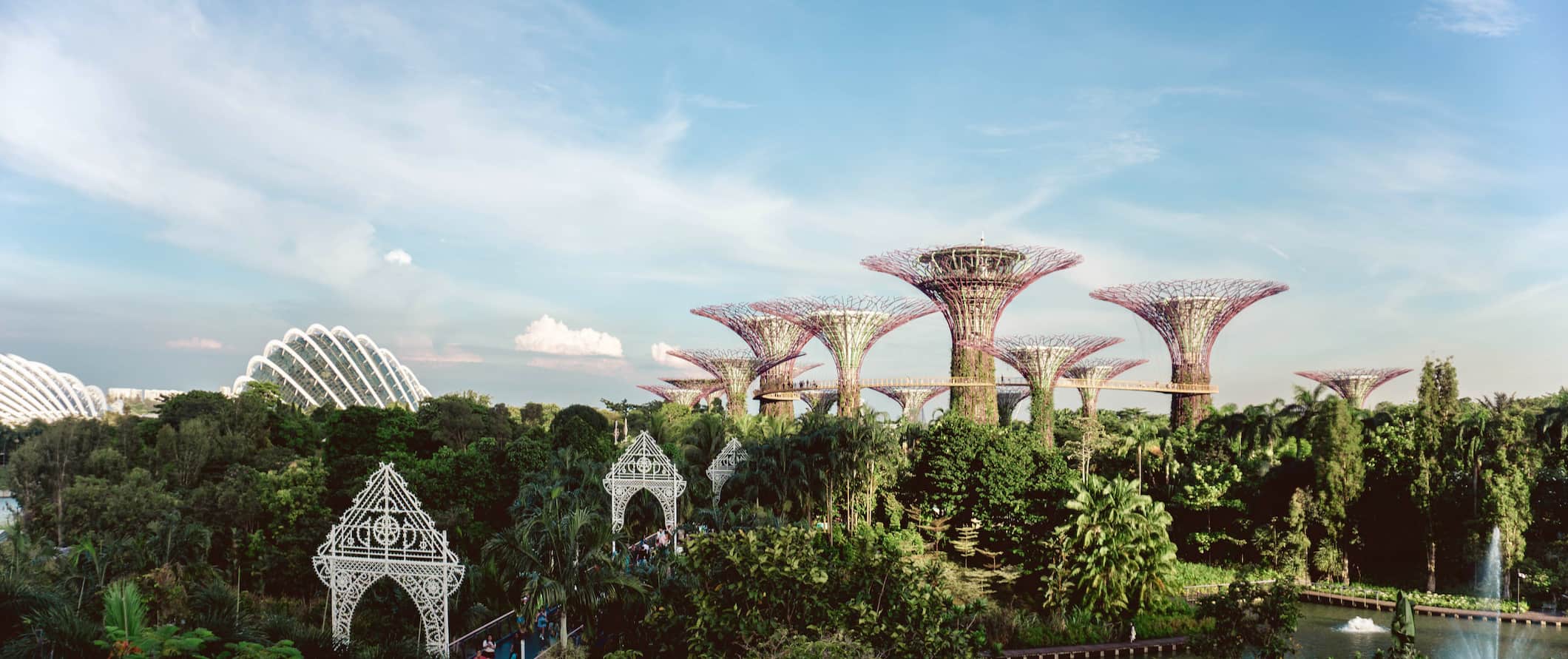
1. Eat at the Boat Quay
Boat Quay is the place to go for dining and entertainment. The alfresco pubs and restaurants make Boat Quay ideal for relaxing after a long day of sightseeing. Try Wakanui for quality Japanese steak cooked over a white oak fire, or Kinara for reasonably priced North Indian cuisine.
2. See the supertrees at Gardens by the Bay
This urban landscaping project is a series of towering metal “supertrees.” There are roughly 200 species of orchids, ferns, and other tropical plants coating their structure. It’s free to walk through the outdoor gardens, but you have to pay 8 SGD for the canopy walk (which is worth doing!) as well as for the stunning Flower Dome and Cloud Forest biodomes .
3. Hang out (and party) on Sentosa
This little island is home to a nighttime light show on the beach and a host of bars, restaurants, and beaches to enjoy. Hang out at Bora Bora Beach Bar or splash out and try the cable car sky dining experience (it isn’t cheap). You can get to Sentosa via the Sentosa Express train (4 SGD). Entering on foot/bicycle is free.
4. Tour the Singapore Zoo
Spanning 70 acres, the Singapore Zoo is massive, boasting over 3,600 mammals, birds, and reptiles. There are lions, tigers, sun bears, Komodo dragons, primates, and much more! The zoo offers a night safari featuring over 900 different nocturnal animals (41% are endangered). Admission is 44 SGD and the night safari is 48 SGD.
5. Hang with the Merlions
The Merlion is Singapore’s mascot and has the head of a lion and the body of a fish. The original statute (and most impressive Merlion) can be found in Merlion Park, but the 37-meter-tall (121-foot) replica on Sentosa is also pretty cool to see. There is no entrance fee for Merlion Park.
Other Things to See and Do in Singapore
1. admire thian hock keng temple.
Thian Hock Keng (Palace of Heavenly Happiness) is one of the most photogenic buildings in Singapore. The temple originated as a small building that served the local Chinese population. It was expanded in 1840 and made from the finest materials available at the time, paid for by years of donations from the local community. It’s the oldest Chinese temple in Singapore, dedicated to Mazu, the Goddess of the Sea (Chinese immigrants came here to ask for safe passage before leaving to cross the South China Sea). The temple was designated as a national monument in 1973. Admission is free.
2. Explore Bukit Timah Nature Reserve
Bukit Timah, located within Singapore’s only remaining stretch of rainforest, is the country’s premier eco-tourism attraction. On the hiking and biking trails, you’ll be able to get up close to the macaques, squirrels, flying lemurs, and various species of birds. The reserve covers over 400 acres and is 30 minutes from the city center. It’s open daily from 7am-7pm. The weekends get really busy, so come during the week if you want to avoid the crowds.
3. Wander around Chinatown
Chinatown encompasses two square kilometers of traditional Chinese life, nestled beside the modern Central Business District. This remains the place to get a real sense of Chinese culture within Singapore. The streets are filled with temples, craft shops, stalls, and restaurants and are a great place to pick up a bargain. Head down Chinatown Food Street to find some char kway teow (stir-fried noodles) or grilled meats. If you can, eat at Hong Kong Soya Sauce Chicken Rice and Noodle (aka Hawker Chan), the world’s most affordable Michelin-starred restaurant. Tian Tian Hainanese Chicken Rice is another Michelin-starred hawker stall worth a visit. Like Hawker Chan’s, it’s located in the Maxwell Hawker Center.
4. Eat hawker food
Singapore’s hawker food scene is one of the best in the world. It has been recognized by Michelin in 2016 with the world’s first street food Michelin star and by UNESCO in 2020 with Cultural Heritage status. Whether you go to Newton Food Center (of Crazy Rich Asian fame), to the Old Airport Hawker (many locals’ favorite), or to one of the other 103 centers across the island, you won’t be disappointed and you can grab a cheap meal surrounded by locals. Don’t miss the chili crab, satay, dim sum (dumplings), or nasi lemak (fried chicken with coconut rice). If you’re not sure where to go or what to eat, take a guided food tour!
5. Take a trip to Pulau Ubin
This island lies off the northeastern coast. It’s incredibly different from the modern city; locals still use a diesel generator for electricity and fetch water from wells. Rent a bike and explore the sights, villages, and beaches of this island. To get there, hop on a bumboat from the Changi Point Ferry Terminal, which costs about 3 SGD and takes 10-15 minutes. There are no fixed departure times — just line up and wait. Very few tourists make it out this way; it’s one of the most off-the-beaten-path things you can do here.
6. Relax in the Singapore Botanic Gardens
The Botanic Gardens lie close to the city and consist of 128 acres of gardens and forest. Founded in 1859, the main attraction is the National Orchid Garden, home to over 1,000 species of orchids. There is also a ginger garden, a rainforest, and various streams and waterfalls to explore. The Botanic Gardens are Singapore’s first UNESCO World Heritage site (and the only tropical botanic garden on UNESCO’s World Heritage List). It’s open daily from 5am-12am, and admission is free to everything except the National Orchid Garden, which is 15 SGD.
7. Eat in Little India
No trip to Singapore is complete without a visit to Little India, where you can get amazing, cheap, and delicious food, fresh vegetables, snacks, and souvenirs. Seek out local favorites like roti prata (pancakes) and teh tarik (“pulled” tea). Make sure you stop off at the Tekka Center, a hawker center with Indian clothing, groceries, and food. The food here is cheap and delicious and makes for an authentic Little India experience.
8. Learn about Singapore’s History
For a more cultural experience, visit the former British naval base of Fort Siloso located on Sentosa. It’s a decommissioned coastal artillery battery the only preserved fort on the coast of Singapore, providing a fantastic look into the city-state’s complicated history. You’ll get to see the coastal guns and the remains of tunnels under the fort. It’s a well-constructed, interactive attraction. Entrance is free.
9. Visit Sri Mariamman Temple
This extremely colorful, ornate temple is the oldest Hindu temple in Singapore, built in 1827 in Chinatown. It was constructed in what is known as the Dravidian style and is devoted to the goddess Mariamman, known for curing illnesses and diseases. During the post-war colonial period, it was a hub for community activities and was even the Registry of Marriages for Hindus. Admission is free.
10. Watch a free concert
The Singapore Symphony Orchestra hosts various free concerts at different venues around the country. You might just be lucky enough to catch one of their shows — just check their website for details during your visit.
11. Visit the MacRitchie Reservoir Park
MacRitchie Reservoir is Singapore’s oldest reservoir, dating back to 1868. Today, this beautiful and lush city park is a relaxing place to spend an afternoon. Walk the 8-kilometer (5-mile) treetop hike, with bridges suspended high above the forest floor, where you might see long-tailed macaque monkeys, squirrels, monitor lizards, owls, and even flying lemurs. In addition to the TreeTop Walk, there’s also a network of walking trails. Admission is free.
12. Visit the National Museum of Singapore
First opened in 1849, this is the oldest museum in Singapore . Learn about the country’s history, culture, and people through the various permanent and temporary exhibitions. There are gold ornaments, 18th-century drawings and artwork, the mace used by King George VI when he declared Singapore a city in 1951, and the Singapore Stone (an indecipherable stone with inscriptions from the 10th century). Admission is 15 SGD.
13. Admire the street art
Singapore has some really incredible street art to admire. While none of it is spontaneous (unauthorized graffiti is illegal), it can be found all over the island. Yip Yew Chong is probably the best-known artist as he has murals everywhere from Chinatown to the East Coast. His images depict scenes from days gone by and range from small pictures to entire walls. Kampong Glam, Chinatown, and Little India all have masses of art to look at, as does the east coast, but you can find it on random buildings in most areas. Take a walking tour if you want more detail, or Art Walk Singapore has three self-guided walks outlined on their website.
14. Marvel at the rain vortex in Jewel
Located adjacent to Changi International Airport, Jewel Mall is home to the world’s tallest indoor waterfall. Cascading from the roof, the water falls seven stories (around 130 feet) to the basement through a huge tiered garden. At night it is lit up for a light and music show. There’s more to do at Jewel if you have time including two mazes, a canopy bridge, sky nets, slides, and a topiary walk. It’s free to see the rain vortex and prices range from 5-22 SGD each for the other activities. You can get bundles that work out cheaper.
15. Explore Kampong Glam
Also known by its most popular street, Haji Lane, and as the Arab Quarter, Kampong Glam is one of Singapore’s oldest neighborhoods. The shophouses here are now stores selling textiles, rugs, and Turkish homewares such as dishes and glass lamps. There are some great Arabic restaurants around here all under the shadow of the enormous golden-domed Sultan Mosque. There’s some street art around here and Haji Lane has some cool eclectic shops by day and a buzzing nightlife with outdoor live music by night. If you have time, check out the Malay Heritage Center (admission is 8 SGD).
16. Get spooked at Haw Par Villa
Hands down the quirkiest thing you can do or see in Singapore, Haw Par Villa is a huge outdoor art gallery. It was built in 1937 by Aw Boon Haw, a millionaire philanthropist one of the men behind Tiger Balm, for his younger brother. Once a theme park for locals, Haw Par Villa was also used as an observation point by the Japanese army during World War II. It’s filled with dioramas depicting Chinese mythology and has recently reopened after a 9-month refurbishment and renovation project. Entry to the grounds is free but the museum — called Hell’s Museum as it includes an exhibit depicting the 10 Courts of Hell — is 18 SGD.
Singapore Travel Costs
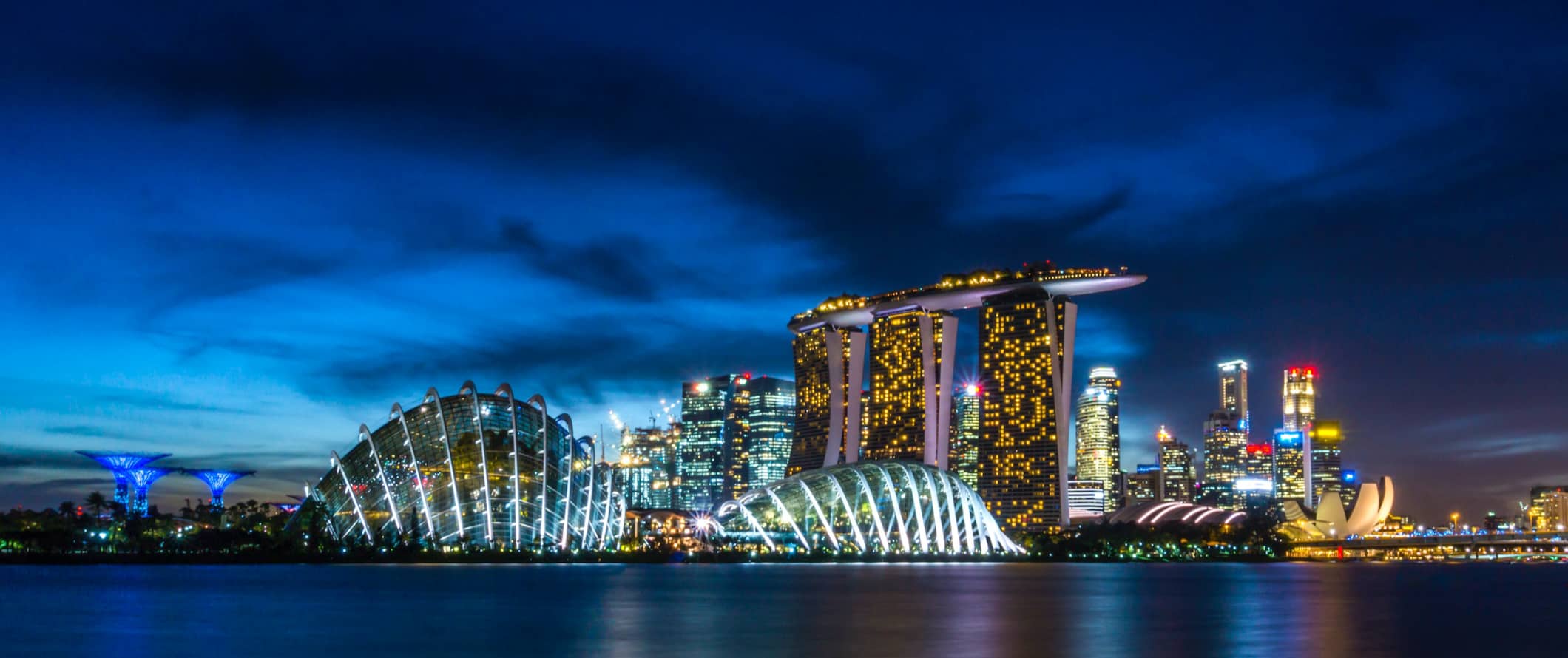
A budget hotel room with amenities like air-conditioning, private bathrooms, free Wi-Fi, and a TV starts around 65 SGD per night. Most larger chain hotels cost at least 80-110 SGD per night.
Airbnb is available in Singapore, with private rooms starting at 25 SGD per night (though they average closer to 60 SGD). Entire homes/apartments average 85 SGD per night.
Food – As a cosmopolitan hub, Singapore has food from all over the world, however, there is an abundance of Chinese and Indian food, which is usually around 8-9 SGD per meal. Rice or noodles are usually the backbone of most meals, and popular dishes include steamed chicken, chili crab, fishhead curry, satay, and nasi lemak (coconut rice cooked in a pandan leaf). The city’s hawker centers (large halls full of various food stalls) are one of the most popular and cheapest places to try Singapore’s vibrant cuisine.
As for Singaporean specialties, try the seafood, which costs around 20-35 SGD for a main dish. For drinks, beer is typically 8-10 SGD, a glass of wine is about 10-16 SGD, and a cappuccino is around 5 SGD.
There are also plenty of low-cost eateries around Singapore, with street stalls typically selling food for less than 6 SGD per meal. A fast-food burger is around 8-10 SGD while sandwiches at a café are around 11-14 SGD. There are many restaurants offering a set lunch menu for around 12-16 SGD, and a dish at dinner in most casual restaurants is around 20 SGD. After that, the sky is the limit.
If you want to cook your own meals, expect to pay 95 SGD per week for basic staples like rice, noodles, vegetables, and some meat or fish.
Backpacking Singapore Suggested Budgets
If you’re backpacking Singapore, expect to spend around 90 SDG per day. This budget covers staying in a hostel dorm, eating at the cheap hawker stalls and in Little India, cooking some meals, limiting your drinking, using public transportation to get around, and doing mostly free activities like walking tours and enjoying nature.
On a more mid-range budget of 175 SGD per day, you can stay in a private hostel room or Airbnb, eat out for all your meals at cheaper hawker stalls, enjoy a few drinks, take the occasional taxi to get around, and do more paid activities like visiting the zoo and the botanic gardens.
On a “luxury” budget of 300 SGD or more per day, you can eat out for all your meals, take taxis everywhere, stay in a hotel, and do whatever tours and activities you want. This is just the ground floor for luxury though. The sky is the limit!
You can use the chart below to get some idea of how much you need to budget daily, depending on your travel style. Keep in mind these are daily averages — some days you’ll spend more, some days you’ll spend less (you might spend less every day). We just want to give you a general idea of how to make your budget. Prices are in SGD.
Singapore Travel Guide: Money-Saving Tips
Singapore isn’t a super cheap destination so you’ll need to tread carefully if you want to avoid blowing your budget. Here are some ways you can save money during your visit:
- Take public transit – Singapore’s public transit system is fast and efficient, making it the best way to get around. Unlimited travel on public transport is 10 SGD per day with a Singapore Tourist Pass. If you’re staying a few days, the pass gets cheaper per day, as a two-day pass is 16 SGD and a three-day pass is 20 SGD.
- Eat on Smith Street – The stalls here offer food for less than 6 SGD and are a great place to sample local snacks.
- Eat cheap – Save money on food by eating in Little India, Chinatown, or the hawker stalls throughout the city. Meals in these places cost only a few dollars and are some of the tastiest around!
- Stay with a local – Use Couchsurfing to stay with a local for free. You’ll not only save money but you’ll get to connect with someone who can share their insider tips and advice.
- Stick to happy hour – Alcohol is expensive in Singapore, so limit your drinking to save money. If you do plan on drinking, stick to the happy hours.
- Avoid bottled water – The tap water here is perfectly fine to drink, so avoid buying water and just refill your bottle. It will save you money and it’s better for the environment! LifeStraw is my go-to brand as their bottles have built-in filters to ensure your water is always clean and safe.
Where to Stay in Singapore
Looking for budget-friendly accommodation? Here are some of my suggested places to stay in Singapore:
- Dream Lodge
- The Pod Capsule Hostel
How to Get Around Singapore
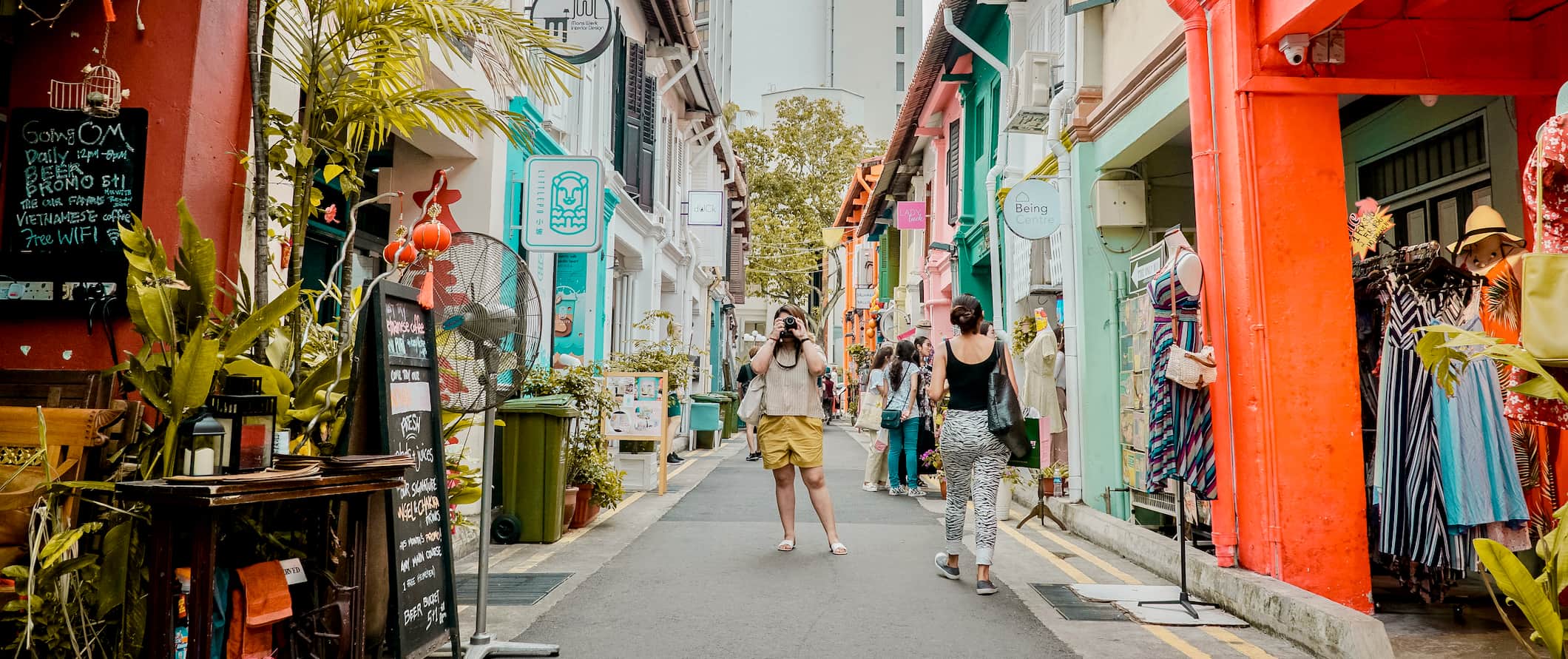
Like the MRT, Singapore’s bus system is extensive and efficient. You can use your Singapore Tourist Pass on the buses as well. You can also pay with cash, but it has to be the exact change. A single trip costs between 1.40-2.50 SGD.
Trishaws – Trishaws (like rickshaws) are less popular these days in Singapore, and now they’re largely used for guided tours that cost around 40 SGD for a 30-minute run. Trishaw Uncle is the only licensed trishaw tour operator in the city, offering various guided tours by trishaw.
Taxi – Taxis are comfortable and convenient, but they’re not cheap! All cabs are metered, but there might be surcharges depending on the company and where you’re going. For example, if you’re hiring a taxi from midnight to 6am there is a 50% surcharge on the total metered cost, while rides in the mornings and evenings carry a 25% surcharge. Prices start at 3.20 SGD and then increase by 0.22 SGD every 400 meters. Skip them if you can!
When to Go to Singapore
It’s always a good time to visit Singapore! The island is warm year-round with a tropical climate that boasts daily temperatures in the high 20s°C (80s°F). December to June is the busiest time to visit, especially during the Chinese New Year. February-April is the driest period with the most sunshine and least amount of rain.
Monsoons occur between December-March, with December usually being the rainiest month. The weather is windy, cloudy, and humid.
Late summer and early fall (July to October) are also a good time to visit if you’re hoping to avoid all the tourist traffic. The weather is still pleasant, averaging around 30°C (87°F) each day, and accommodation might be a bit cheaper during this time as well.
How to Stay Safe in Singapore
Singapore is an incredibly safe place to backpack and travel — even if you’re traveling solo, and even as a solo female traveler. In fact, it’s one of the safest countries in the world (it’s currently the 11th safest country).
Solo female travelers should feel comfortable here, though the standard precautions apply (don’t walk home alone at night, don’t accept drinks from strangers, etc.)
Be aware that penalties for breaking the law here are stiff. For example, you’ll be fined up to 1,000 SGD for things like littering, spitting, and smoking in public. Singapore is also notoriously strict on drugs. If you’re caught even with marijuana in your system you could do jail time. In short, say no to drugs here!
Scams are rare in Singapore, however, if you’re worried about getting ripped off you can read about common travel scams to avoid here .
If you experience an emergency, dial 999 for assistance.
Always trust your gut instinct. If a taxi driver seems shady, stop the cab and get out. Make copies of your personal documents, including your passport and ID. Forward your itinerary along to loved ones so they’ll know where you are.
If you don’t do it at home, don’t do it when you’re in Singapore. Follow that rule and you’ll be fine.
The most important piece of advice I can offer is to purchase good travel insurance. Travel insurance will protect you against illness, injury, theft, and cancellations. It’s comprehensive protection in case anything goes wrong. I never go on a trip without it as I’ve had to use it many times in the past. You can use the widget below to find the policy right for you:
Singapore Travel Guide: The Best Booking Resources
These are my favorite companies to use when I travel. They consistently have the best deals, offer world-class customer service and great value, and overall, are better than their competitors. They are the companies I use the most and are always the starting point in my search for travel deals.
- Skyscanner – Skyscanner is my favorite flight search engine. They search small websites and budget airlines that larger search sites tend to miss. They are hands down the number one place to start.
- Hostelworld – This is the best hostel accommodation site out there with the largest inventory, best search interface, and widest availability.
- Agoda – Other than Hostelworld, Agoda is the best hotel accommodation site for Asia.
- Booking.com – The best all around booking site that constantly provides the cheapest and lowest rates. They have the widest selection of budget accommodation. In all my tests, they’ve always had the cheapest rates out of all the booking websites.
- Get Your Guide – Get Your Guide is a huge online marketplace for tours and excursions. They have tons of tour options available in cities all around the world, including everything from cooking classes, walking tours, street art lessons, and more!
- SafetyWing – Safety Wing offers convenient and affordable plans tailored to digital nomads and long-term travelers. They have cheap monthly plans, great customer service, and an easy-to-use claims process that makes it perfect for those on the road.
- LifeStraw – My go-to company for reusable water bottles with built-in filters so you can ensure your drinking water is always clean and safe.
- Unbound Merino – They make lightweight, durable, easy-to-clean travel clothing.
Singapore Travel Guide: Related Articles
Want more info? Check out all the articles I’ve written on Singapore travel and continue planning your trip:
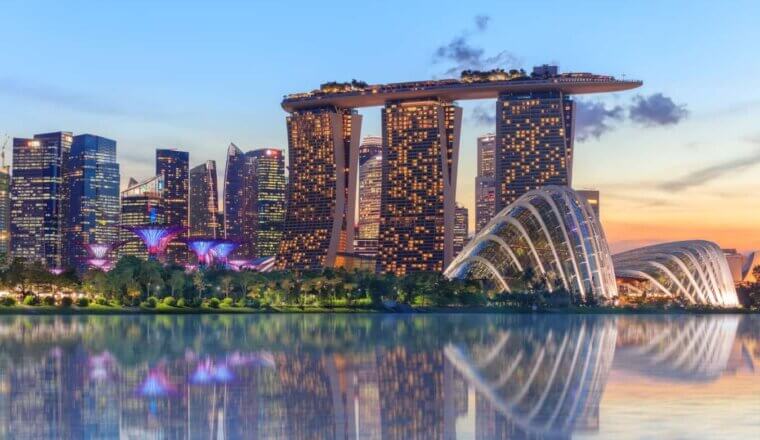
The 5 Best Hotels in Singapore

The 4 Best Hostels in Singapore
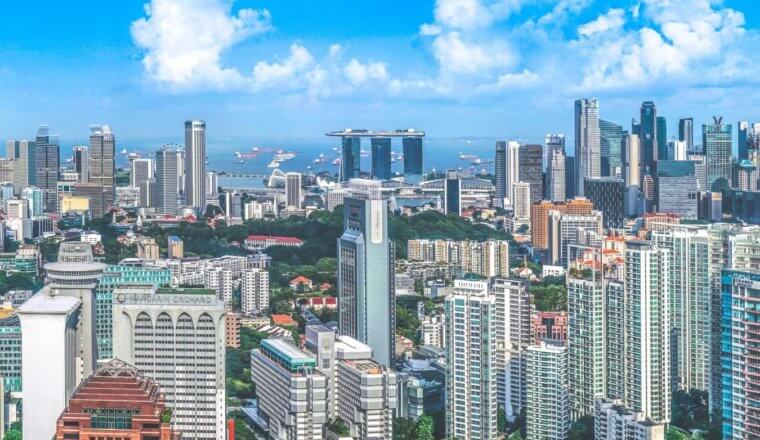
Where to Stay in Singapore: The Best Neighborhoods for Your Visit

Is Southeast Asia Safe for Travelers?
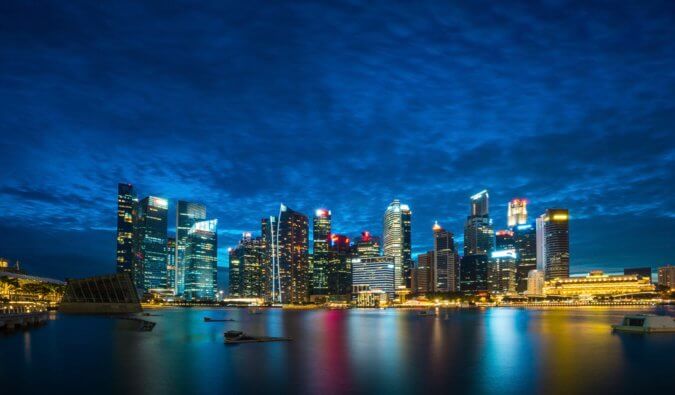
18 Free and Cheap Things to Do in Singapore
Get your free travel starter kit.
Enter your email and get planning cheatsheets including a step by step checklist, packing list, tips cheat sheet, and more so you can plan like a pro!

- Where To Stay
- Transportation
- Booking Resources
- Related Blogs
- Best Eat & Drink
- Best Entertainment
- Best Shopping
- Best Beauty
- Best Lifestyle
- Best Living
- Best Education
- Best Travel Guides
- Best Local Services
- Best Buying Guides
- Featured Businesses
- Questions & Answers
- Advertise With Us
- Best List Advertising

Singapore Travel Guide 2024

Singapore has been in the top ten list of the most visited cities in the world for years. Our small yet beautiful island deserves it as the city has everything to satisfy any need of visitors: a green and safe environment, cultural diversity, delicious food, world-class shopping malls, the latest fashion and electronics, vibrant nightlife, cheap and convenient public transport, and many more.
You are reading the most comprehensive Singapore travel guide [2024 Guide], which covers everything you need to know to have a satisfying trip. Scroll down to discover them all.
How to Get from Changi Airport to City Centre?
You can ride a taxi, airport shuttle bus, mrt train or limousine. find out which one is the most suitable option for you..
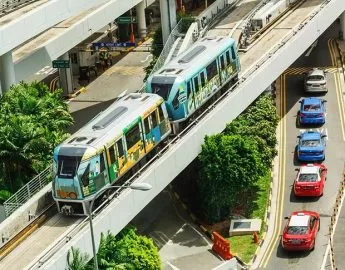
What are recommended Airport Transfer Services?
We’ve gathered the top reliable transport services in the country to get you from the airport to your hotel with zero fuss..

Where to Exchange Money in Singapore?
Here are all the most reputable currency exchange centres and money changers for you to get the best exchange rates..
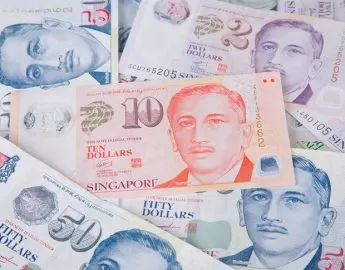
What to See and Do in Singapore?
Here are the top attractions for first-timers, families and culture fanatics to enjoy..
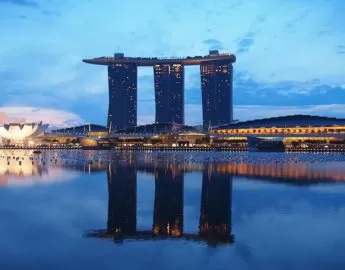
How to Eat Like a Local in Singapore?
Eat what locals eat. here are all the local all-time favorite dishes to enjoy in singapore..
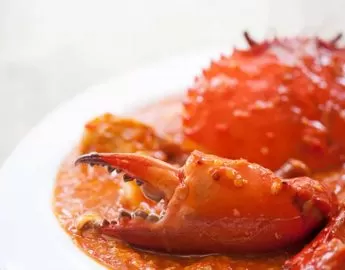
Where to Eat Like a Local in Singapore?
Locals love to have their daily meals at food courts and zi char houses..
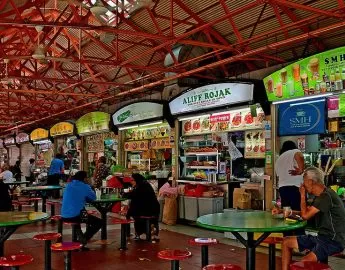
Where to Have Vegetarian Food in Singapore?
From upscale to affordable, from buffet to a la carte, from chinese style to indian style, here are all the vegetarian options singapore has to offer..
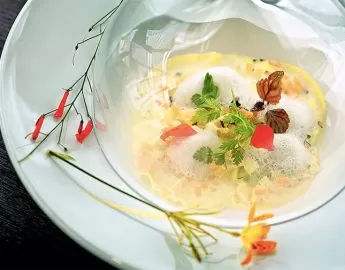
Where to Have Halal Food in Singapore?
From fancy international buffets in five-star hotels to budget-friendly a la carte meals at individual restaurants, there is plenty of halal food to enjoy..
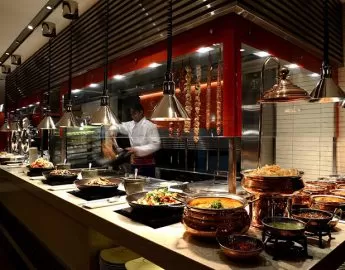
Where to Shop in Singapore?
Whether you want to shop at an orchard luxury mall, a factory outlet mall or a street market, singapore has got you covered..
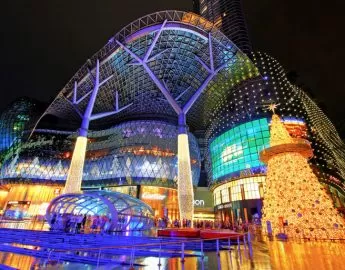
What to Buy in Singapore?
Here are the best products to bring home as a souvenir for your loved ones..
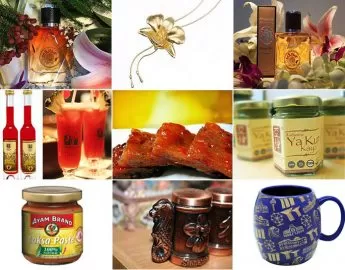
What to Do at Night in Singapore?
Singapore has one of the hottest and most vibrant nightlife scenes in asia. discover it here..
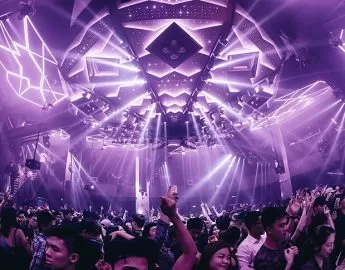
What to Enjoy More in Singapore?
Massage and beauty sessions can make the brilliant extras for a more satisfying trip..
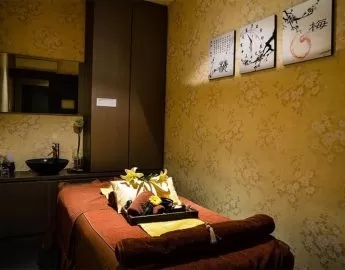
Travel Guide Singapore
Book your individual trip , stress-free with local travel experts
Select Month
- roughguides.com
- Travel guide
- Local Experts
- Travel Advice
- Accommodation
Plan your tailor-made trip with a local expert
Book securely with money-back guarantee
Travel stress-free with local assistance and 24/7 support
“The handiest and most marvellous city I ever saw”, wrote the natural historian William Hornaday of Singapore in 1885, “as well planned and carefully executed as though built entirely by one man. It is like a big desk, full of drawers and pigeonholes, where everything has its place, and can always be found in it.” This succinct appraisal seems apt even now, despite the tiny island’s transformation from an endearingly chaotic colonial port, one that embodied the exoticism of the East, into a pristine, futuristic shrine to consumerism. In the process, Singapore acquired a reputation, largely deserved, for soullessness, but these days the place has taken on a more relaxed and intriguing character, one that achieves a healthier balance between Westernized modernity and the city-state’s traditional cultures and street life.
Top 5 dishes
Sri mariamman temple, taking chinese tea, tanjong pagar, the baba house, drinking and nightlife, entertainment, street theatre, travel ideas for singapore, created by local experts.

Indulgent Singapore
From the infamous Singapore Sling to fabulous shopping and nightlife, colourful neighbourhoods and mouth-watering cuisine, the small city-island of Singapore packs a punch. Come here for a relaxing break or a luxury respite before heading on to one of its more frantic neighbours.

Uniquely Singapore
There’s plenty to enjoy in Singapore, from visiting ethnic neighbourhoods like Little India and Chinatown, to night safaris, authentic street food and sampling the eponymous cocktail, or two. Singapore is, in short, the ideal introduction to Asia in one fell swoop.
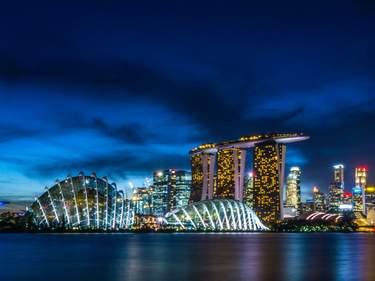
Singapore & Bali - A Unique Exploration
Combine Southeast Asia's smallest country Singapore with its largest country: Indonesia. Spend a few days exploring the metropolis before flying to the magical island of Bali. Temples, volcanoes and ceremonies are part of your itinerary, as are the gorgeous beaches of Nusa Lembongan.

Singapore Family Fun
From lush rainforests to cool night safaris, a glittering skyline and gorgeous Sentosa beaches, Singapore has plenty to offer. Easy to navigate and pristine clean with warm and welcoming locals, its characterful districts and numerous green spaces will ensure everyone is entertained.

Malaysia, Brunei and Singapore adventure
A diverse and unforgettable exploration awaits! From the vibrant city of Kuala Lumpur to the cool retreat of Cameron Highlands. Immerse yourself in lush tea plantations before heading to Borneo for thrilling orangutan encounters and unforgettable river safaris. Brunei and Singapore conclude the trip

Malaysia Express from Singapore
A captivating 7-day tour that unveils the beauty of Malaysia, commencing from Singapore. Traverse the border into Malacca to uncover its rich heritage gems. Progress to Kuala Lumpur, where iconic landmarks await your exploration. Culminate your journey in George Town, Penang.
The foundation for Singapore’s prosperity was its designation as a tax-free port by Sir Stamford Raffles, who set up a British trading post here in 1819. The port plays a key role in the economy to this day, though the island now also thrives on high-tech industry, financial services and tourism, all bolstered by a super-efficient infrastructure. All these achievements were accompanied by a major dose of paternalism, with the populace accepting heavy-handed management by the state of most aspects of life in exchange for levels of affluence that would have seemed unimaginable a couple of generations ago. Thus it is that since independence much of the population has been resettled from downtown slums and outlying kampongs (villages) into new towns, and the city’s old quarters have seen historic buildings and streets bulldozed to make way for shopping malls.
Yet although Singapore lacks much of the personality of some Southeast Asian cities, it has more than enough captivating places to visit, from elegant temples to fragrant medicinal shops to grand colonial buildings. Much of Singapore’s fascination springs from its multicultural population, a mixture of Chinese, Malay and Indian, which can make a short walk across town feel like a hop from one country to another, and whose mouthwatering cuisines are a major highlight of any visit. The city also rejoices in a clutch of fine historical museums that offer a much-needed perspective on the many successes and sacrifices that made Singapore what it is today, plus a lively arts scene featuring no shortage of international talent and local creativity.
Top image © weerasak saeku/Shutterstock
Singapore has no national dish – but that’s because it has any number of dishes that could happily qualify for that title. As many travellers never graduate beyond extremely predictable fried rice and noodle plates, here’s our selection of five of the best things to try.
Satay A mainly Malay dish of mini-kebabs on twig-like sticks, barbecued over coals and eaten dipped in a peanut-based sauce, accompanied by glutinous rice cakes and cucumber and onion slices.
Fish-head curry Many Indian restaurants offer this fiery stew containing a large fish head – eyes and all; the cheeks are the best bits.
Chicken rice Widely available at hawker centres, this Hainanese speciality features steamed chicken served atop rice cooked in chicken stock, served up with chicken consommé – the simplest of concepts, but incredibly satisfying.
Chilli crab Whole crabs wok-fried and served in a gloopy gravy made with tomato, chilli, garlic and a little egg. It’s mainly served at seafood outlets, though some ordinary Chinese restaurants offer it too.
Laksa A Peranakan classic of rice noodles, prawns and other morsels steeped in a rich, spicy, curried coconut soup; not hard to find at hawker centres and food courts.
The two square kilometres of Chinatown , west and south of the Singapore River, were never a Chinese enclave in what is, after all, a Chinese-majority country, but they did once represent the focal point of the island’s Chinese life and culture. More so than the other old quarters, however, Chinatown has seen large-scale redevelopment and become a bit of a mishmash. Even so, a wander through the surviving nineteenth-century streets still unearths musty and atmospheric temples and clan associations, and you might hear the rattle of a game of mahjong being played.
The area was first earmarked for Chinese settlement by Raffles, who decided in 1819 that Singapore’s communities should be segregated. As immigrants poured in, the land southwest of the river took shape as a place where new arrivals from China, mostly from Fujian (Hokkien) and Guangdong (Canton) provinces and to a lesser extent Hainan Island, would have found temples, shops with familiar products and, most importantly, kongsi s – clan associations that helped them find lodgings and work as small traders and coolies.
This was one of the most colourful districts of old Singapore, but after independence the government chose to grapple with its tumbledown slums by embarking upon a redevelopment campaign that saw whole streets razed. Someone with an unimpeachable insight into those times, one Lee Kuan Yew, is quoted thus in the area’s Singapore City Gallery: “In our rush to rebuild Singapore, we knocked down many old and quaint buildings. Then we realized that we were destroying a valuable part of our cultural heritage, that we were demolishing what tourists found attractive.” Not until the 1980s did the remaining shophouses and other period buildings begin to be conserved, though restoration has often rendered them improbably perfect. Even so, as in Little India, the character of the area has had a bit of a shot in the arm courtesy of recent immigrants. As regards sights, the Thian Hock Keng, Buddha Tooth Relic and Sri Mariamman temples are especially worthwhile, as is the Chinatown Heritage Centre museum, and there’s plenty of shophouse architecture to justify a leisurely wander.
Though Singapore has no shortage of striking modern buildings, it’s the island’s rows of traditional shophouses that are its most distinctive architectural feature. Once often cramped and unsanitary, many were demolished in the years following independence, but since the 1980s whole streets of them have been declared conservation areas and handsomely restored.
As the name suggests, shophouses were originally a combination of shop and home, with the former occupying the ground floor of a two- or three-storey building; eventually many came to be built purely as townhouses, but the original name stuck. Unusually, the facade is always recessed at ground level, leaving a space here that, combined with adjoining spaces in a row of shophouses, would form a sheltered walkway at the front (the “five-foot way” , so named because of its minimum width) – hence the lack of pavements on Singapore’s older streets. Another notable feature is that shophouses were built narrow and surprisingly deep. Behind the ground-floor shop or reception hall there might be a small courtyard, open to the sky, then yet another room; this layout can be seen at the Baba House and the Katong Antiques House. Also, shophouses were usually built back to back, with tiny alleyways separating the rear sections of adjoining rows; it’s down one such alleyway that the brothels of Desker Road are tucked away.
Shophouses began to be built from the mid-nineteenth century. The oldest ones are no longer standing, but slightly later examples, which still exist on and around Telok Ayer and Arab streets, for example, feature the characteristic shuttered windows and tiled roofs that continued to be used for several decades. Otherwise, their decoration was limited, say, to simple stuccowork, but by the turn of the last century, the shophouse had blossomed into a dizzy melange of Western and Eastern styles, which both European and local architects enjoyed blending. So-called Neoclassical, Chinese Baroque and Rococo shophouses featured decorative Corinthian columns, mini-pediments, fanlights, a riot of multicoloured tilework and stucco, even curvy gables. Local ornamentations included wooden trelliswork and eaves overhung with a row of fretted fascia boards, both often seen in Malay palaces; Peranakan pintu pagar , half-height swing doors like those in Wild West bars; and Chinese touches such as floral and animal motifs. You can see fine wedding-cake-like rows of shophouses in these styles around Joo Chiat Road in Katong and on Sam Leong and Petain roads at the northern edge of Little India.
By the 1930s, global recession and prevailing artistic trends had caused a swing towards more sober Art Deco and modernist buildings, with simpler, geometrical facades often topped by a central flagpole. Shophouses with so-called Tropical Deco stylings continued to be built in Singapore after World War II, even though Art Deco had become old hat elsewhere, and there are quite a few examples in Chinatown, on South Bridge Road for example.
Boxy 1960s shophouses were the form’s last hurrah. By the 1980s, shophouses had pretty much fallen out of favour as they were just too small to make efficient use of scarce land, though a semblance of the five-foot way lived on in some concrete shopping developments of the time.
As with heritage buildings the world over, today’s surviving shophouses are often but a handsomely restored shell concealing insides that have been totally gutted and rejigged. Many no longer serve as shops, homes or clan houses, functioning instead as bars, beauty salons or offices.
Singapore’s oldest Hindu shrine, the Sri Mariamman Temple, boasts a superb entrance gopuram bristling with brightly coloured deities. A wood and atap hut was first erected here in 1827 on land belonging to Naraina Pillay, a government clerk who arrived on the same ship as Stamford Raffles when he first came ashore at Singapore; the present temple was completed around 1843. Inside, look up at the roof to see splendid friezes depicting a host of Hindu deities, including the three manifestations of the supreme being: Brahma the creator (with three of his four heads showing),
Vishnu the preserver, and Shiva the destroyer (holding one of his sons). The main sanctum is devoted to Mariamman, a goddess worshipped for her healing powers.
Smaller sanctums dotted about the walkway circumnavigating the temple honour other deities. In the one dedicated to the goddess Periachi Amman, a sculpture portrays her with a queen lying on her lap, whose evil child she has ripped from her womb; it’s odd, then, that Periachi Amman is the protector of children, to whom babies are brought when one month old. Once a year, during the festival of Thimithi (Oct or Nov), an unassuming patch of sand to the left of the main sanctum is covered in red-hot coals that male Hindus run across to prove the strength of their faith. The participants, who line up all the way along South Bridge Road waiting for their turn, are supposedly protected from the heat of the coals by the power of prayer.
At two Tanjong Pagar teahouses, Tea Chapter and Yixing Yuan Teahouse, visitors can glean something of the intricacies of the deep Chinese connection with tea by taking part in a tea workshop lasting up to an hour. Participants are introduced to different varieties of tea and talked through the history of tea cultivation and the rituals of brewing and appreciating the drink. The water, for example, has to reach an optimum temperature that depends on which type of tea is being prepared; experts can tell its heat by the size of the rising bubbles, described variously as “sand eyes”, “prawn eyes”, “fish eyes”, etc. Both venues also stock an extensive range of tea-related accoutrements such as tall “sniffer” cups used to savour the aroma of the brew before it is poured into squat teacups for drinking.
The district of Tanjong Pagar , fanning out south of Chinatown between Neil and Maxwell roads, was once a veritable sewer of brothels and opium dens. Then it was earmarked for regeneration as a conservation area, following which dozens of shophouses were painstakingly restored and converted into bars, restaurants and shops, notably on Neil Road and Duxton Hill just south of it. A grander example of the area’s architecture can be found right where South Bridge Road flows into Neil and Tanjong Pagar roads: here you’ll easily spot the arches and bricked facade of the Jinrikisha Building , constructed at the turn of the last century as a terminus for rickshaws. They were superseded by trishaws after World War II, and today the building serves as office space – with a celebrity landlord, the Hong Kong actor Jackie Chan.
Tanjong Pagar’s main sight is the Baba House , though as an architectural attention-grabber it’s rivalled by the seven interlinked towers of the Pinnacle@Duxton , a showpiece public housing development that offers fine views over much of Singapore.
The Baba House is one of Singapore’s most impressive museums, because it is and isn’t a museum: what you see is a Peranakan house from the turn of the last century, meticulously restored to its appearance in the late 1920s, a particularly prosperous time in its history.
The house is easily spotted as it’s painted a vivid blue. Note the phoenixes and peonies on the eaves above the entrance, signifying longevity and wealth and, together, marital bliss. Even more eye-catching is the pintu pagar , the pair of swing doors with beautiful gilt and mother-of-pearl inlays.
With its affluence and large expat community, Singapore supports a huge range of drinking holes , from elegant colonial chambers through hip rooftop venues with skyline views to slightly tacky joints featuring karaoke or middling covers bands. There’s also a bunch of glitzy and vibrant clubs where people let their hair down to cutting-edge sounds minus – this being Singapore – any assistance from illicit substances. Some venues regularly manage to lure the world’s leading DJs to play, too.
Singapore offers an excellent range of cultural events in all genres, drawing on both Asian and Western traditions, and even on a brief visit it’s hard not to notice how much money has been invested in the arts. Prime downtown property has been turned over to arts organizations in areas like Waterloo Street and Little India, and prestige venues like Theatres on the Bay bring in world-class performers – at top-dollar prices. This isn’t to say that all is hunky-dory: questions remain over whether creativity is truly valued when censorship lingers, if not as overtly as in the 1970s and 1980s, then in terms of there being well-established red lines concerning party politics, ethnicity and religion which no one dare cross. More cynically, some say that support for the arts is a way to keep Singapore attractive to expats and its own sometimes restive middle class.
Walk around Singapore long enough and you’re likely to stumble upon some sort of streetside cultural event, most usually a wayang – a Malay word used in Singapore to denote Chinese opera. Played out on outdoor stages next to temples and markets, or in open spaces in the new towns, wayangs are highly dramatic and stylized affairs, in which garishly made-up characters enact popular Chinese legends to the accompaniment of the crashes of cymbals and gongs. They’re staged throughout the year, but the best time to catch one is during the Festival of the Hungry Ghosts, when they are held to entertain passing spooks. Another fascinating traditional performance, lion-dancing , takes to the streets during Chinese New Year, and puppet theatres may appear around then, too. Chinatown and the Bugis/Waterloo Street area are places where you might stumble upon performances.
With so many ethnic groups and religions present in Singapore, it would be unusual if your trip didn’t coincide with some sort of traditional festival, ranging from exuberant, family-oriented pageants to blood-curdlingly gory displays of devotion. Below is a chronological round-up of Singapore’s major festivals (excluding commercial events themed around shopping or the arts, for example, which are covered in the relevant chapters), with suggestions of where best to enjoy them. The dates of many of these change annually according to the lunar calendar; we’ve listed rough timings, but for specific dates it’s a good idea to check with the Singapore Tourism Board ( w yoursingapore.com ). Some festivals are also public holidays, when many shops and restaurants may close.
Singapore is the only country with an ethnic Chinese majority not to use Chinese as its main language of education and business. English enjoys that role – but here it’s often upstaged by the entertaining, though often baffling, Singlish , a mash-up of English together with the grammatical patterns and vocabulary of Chinese and Malay. Pronunciation is staccato, with final consonants often dropped, so “cheque book” would be rendered “che-boo”. In two-syllable words the second syllable is lengthened and stressed by a rise in pitch: ask a Singaporean what they’ve been doing, and you could be told “slee-PING”.
Conventional English syntax is twisted and wrung, and tenses and pronouns discarded. If you ask a Singaporean if they’ve ever seen a Harry Potter film, you might be answered “I ever see”, while enquiring whether they want to go out to buy something might yield “Go, come back already”. Responses are almost invariably reduced to their bare bones, with words often repeated for stress; request something in a shop and you’ll hear “have, have”, or “got, got”.
Exclamations drawn from Malay and Hokkien Chinese complete this pidgin, the most ubiquitous being the Malay suffix “lah”, used to add emphasis to replies, as in: “Do you think we’ll get in for free?” “Cannot lah!” If Singlish has you totally confused, try raising your eyes to the heavens and crying “ay yor” (with a drop of tone on “yor”) – an expression of annoyance or exasperation.
Although these linguistic quirks often amuse foreigners and locals alike, there is much official hand-wringing that poor English could compromise Singapore’s ability to do business globally, so much so that a government-backed Speak Good English movement has been set up to try to shore up standards.
Travel advice for Singapore
From travel safety to visa requirements, discover the best tips for traveling to Singapore
- Eating and drinking in Singapore
- Travel Tips Singapore for planning and on the go
- How to get to Singapore
- Travelling with children in Singapore
- Shopping tips for Singapore
- Getting around Singapore: Transportation Tips
- Best time to visit Singapore
The Rough Guides to Singapore and related travel guides
In-depth, easy-to-use travel guides filled with expert advice.
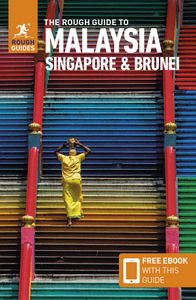
Find even more inspiration here

Planning your own trip? Prepare for your trip
Use Rough Guides' trusted partners for great rates
written by Rough Guides Editors
updated 11.10.2023
Ready to travel and discover Singapore?
Get support from our local experts for stress-free planning & worry-free travels.
- Travel advice
- Where to stay
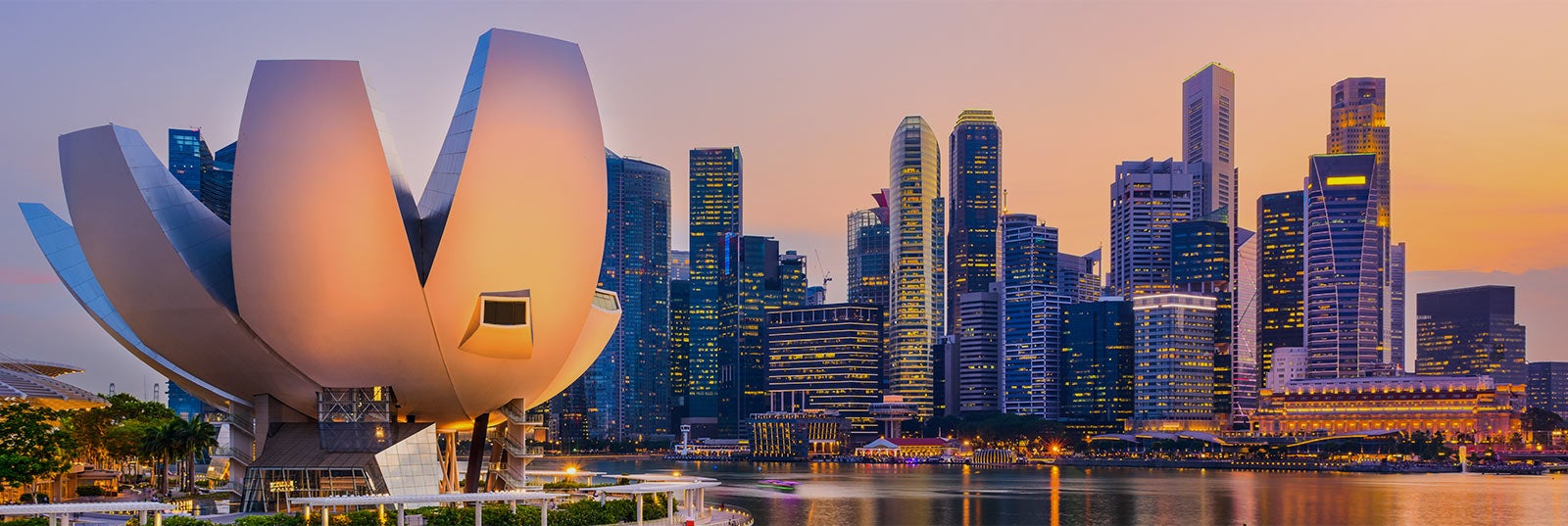
Singapore, the Asian Tiger, is vibrant and ever-changing , at once a city, an island, and a nation with more than 5 million inhabitants: it has become an icon worldwide. Along with Bangkok and Hong Kong, Singapore is one of South East Asia's most popular tourist destinations .
- General Information
- Top Attractions
- Getting to Singapore
- Where to Stay
- Where to Eat
- Singapore Map
Why Visit Singapore?
Exploring the Singapore river by boat, eating in a hawker, seeing the skyscrapers from Merlion Park , visiting Little India , exploring Chinatown , or having a drink in Clarke Quay ... Singapore has any number of unforgettable experiences just waiting for you.
If this inspires you to visit Singapore, once you get there, you'll quickly realize that the best thing about the city is its unique atmosphere . Singapore is a city where you can find almost anything at almost any time: concerts, events , and lively streets are something the locals live on a daily basis.
Discover why tourism to Singapore grows year on year .
Book Your Hotel Stay With a Discount
Hotels and accommodation in general are quite expensive for what you would expect in a Southeast Asian city.
To save on accommodation, we recommend checking out this link to avail of great discounts (up to 75%). You'll pay nothing when you book and pay directly at the hotel.
- Hotels in Singapore - Book online with a lowest price guarantee
top activities
Guided tour of Singapore On this tour, we'll discover the must-see sights in Singapore , from Merlion Park to the botanical garden - the best way to explore the city in just a few hours.
Singapore Cable Car Ticket Enjoy some of the most spectacular views in the city with the Singapore Cable Car Ticket - the best way to get to Sentosa Island!
Singapore Flyer Ticket Enjoy the best panoramic views Singapore offers when you buy this ticket for the amazing Singapore Flyer observation wheel , one of the most famous in Asia!
Sentosa Fun Pass With this Sentosa Fun Pass, you'll enjoy some of the most fun attractions on this island of Singapore . Plus, you'll save money - it's a win-win!
Experience an unforgettable day at Singapore Universal Studios . Spend the day on rollercoasters and meet your favorite characters like Shrek, Elmo, and more!
Ticket to the Gardens by the Bay Experience a different day far from the bustle of Singapore in the Bay Gardens. Bottle trees, baobabs and over 500,000 species from around the world await.
Universal Studios Singapore Excursion Enjoy fun filled day at Universal Studios Singapore, with transport from your hotel and entry to the park, all you need to do is enjoy!
Sentosa Island Cable Car Ticket Aboard Singapore's famous cable car you'll discover the beauty of Sentosa Island from above, enjoying a panoramic view of the city's main attractions!
Singapore Tourist Bus The Singapore sightseeing bus takes you around the city's must-see sights and you can hop on and off an unlimited number of times to see the local skyscrapers!
Singapore Night Tour with Dinner Get lost in Singapore's nightlife and enjoy incredible views of the city. You'll try a traditional dish and sip a famous cocktail.
Go City: Singapore Explorer Pass Save money and craft your own itinerary on your trip to Singapore with the Go City: Singapore Explorer Pass . You'll have access to several different sites!
Singapore SIM Card Stay in touch with your family and friends on your trip to Singapore with this SIM card with 7.5 GB of high-speed internet for 15 days .
Singapore Zoo Tour Leave the city and explore one of the most fascinating zoos in the world , where the thousands of animals are only separated by natural barriers.
Singapore Bike Tour Discover Singapore in a different way, exploring the city by bike . Visit Kampong Glam, Chinatown and Little India with an expert guide.
Marina Bay Night Tour On this night tour of Marina Bay , discover one of the most beautiful areas of Singapore as the sun sets . We'll see the most beautiful monuments all lit up!
Singapore Private Tour Explore the city in an exclusive way with this Singapore Private Tour. Discover the main charms of this city with an exclusive English-speaking guide.
Singapore Pub Crawl Enjoy an unforgettable night of fun in Singapore on this pub crawl of the city's hottest bars, which includes three drinks . Ready to join the party?
Singapore Art and Science Museum Ticket Be seduced by the futurism and the innovative technology in Singapore's Museum of Art and Science found in the most iconic building in the city
On this scooter tour of Singapore , we'll tour the city and watch the sunset as it falls beyond the horizon, lighting up the city's buildings .
Singapore’s Historic Chinatown Walking Tour On this guided tour of Chinatown , you'll experience the exciting atmosphere of Singapore's Chinatown , the oldest part of the city . Plus, sample local cuisine!
Singapore Tour for Cruise Passengers Arriving on board a cruise ship? Discover the main charms of the city with this Singapore Tour for Cruise Passengers taking you to its most symbolic locations.
Singapore Layover Tour Make the most of your stopover with this Singapore Layover Tour. You'll get to know the main monuments accompanied by an English-speaking guide.
Madame Tussauds Ticket Fancy a selfie with Tom Cruise, Taylor Swift or Jackie Chan ? At Madame Tussauds Singapore you'll find tens of wax replicas of the most famous people in history.
Go City: Singapore All-Inclusive Pass The Go City: Singapore All-Inclusive Pass gives you free access to more than 35 attractions around Singapore for 2, 3, 4, 5, 6 or 7 consecutive days .
Singapore Duck Tour On our Singapore DUCK Tour, we'll travel by both land and sea as we explore one of the most fascinating and bustling cities in Southeast Asia .
Sentosa Island Trip: Self Guided Take the cable car to Sentosa Island to discover the attractions on Singapore's most famous island such as Sentosa Cove , Siloso Point or Resorts World Sentosa .
Marina Bay Sands Observation Deck Ticket Enjoy the best views of Singapore from one of the most emblematic points in the city: the Marina Bay Sands hotel observation deck !
Guide to Singapore
The Civitatis tourist guides are written by travelers like you. Here at Introducing Singapore, we're going to let you in on the secrets we discover on our travels. Discover what to see , what to do, and how to save in Singapore, a city known as the Asian Tiger.
The information and details in this guide were updated in March 2023. If you see any errors or anything we should change, please get in touch .

Our travel guides
- top attractions
- where to stay
- and much more

Singapore Tourist Guide

Jaclynn Seah is a Singaporean who has spent most of her life in the little red dot. An avid traveller, she loves jetting around the world for new adventures, but has learned to appreciate the beauty of returning to Singapore, and enjoys sharing about her home country in writing and in person.
Jaclynn is a licensed tourist guide in Singapore who conducts tours in English. She is an established travel writer who co-wrote the 2023 edition of Lonely Planet Singapore and writes about Singapore and her travels for various publications.
Looking to hire a private tourist guide in Singapore?
If you want someone who can share the best tips on navigating Singapore’s major tourist attractions while showing you the hidden secrets of its vibrant local culture, drop me a note and let’s talk about how I can help you make the most of your trip to Singapore.

Guiding Experience
Officially licensed as a Singapore tourist guide in 2024, I have experience showing people around Singapore through various other projects in earlier years.
OH! Open House
I was a volunteer guide who led art walks in various Singapore neighbourhoods through past editions of OH! Open House, an independent art organisation. Districts guided include Kampong Gelam, Emerald Hill and Joo Chiat.

Amazon Explore (closed)
As a guide with Fourwinds, I created and hosted various hour-long virtual tours around Singapore during the pandemic from 2021-2022 when travel opportunities were limited, introducing an international audience to Singaporean tourist attractions like Chinatown, Little India and the Singapore River, with a focus on street art .
Unfortunately, this beta programme was shut down in 2022 after two years, but I gained a lot of experience and was trained quite intensively in that short period.
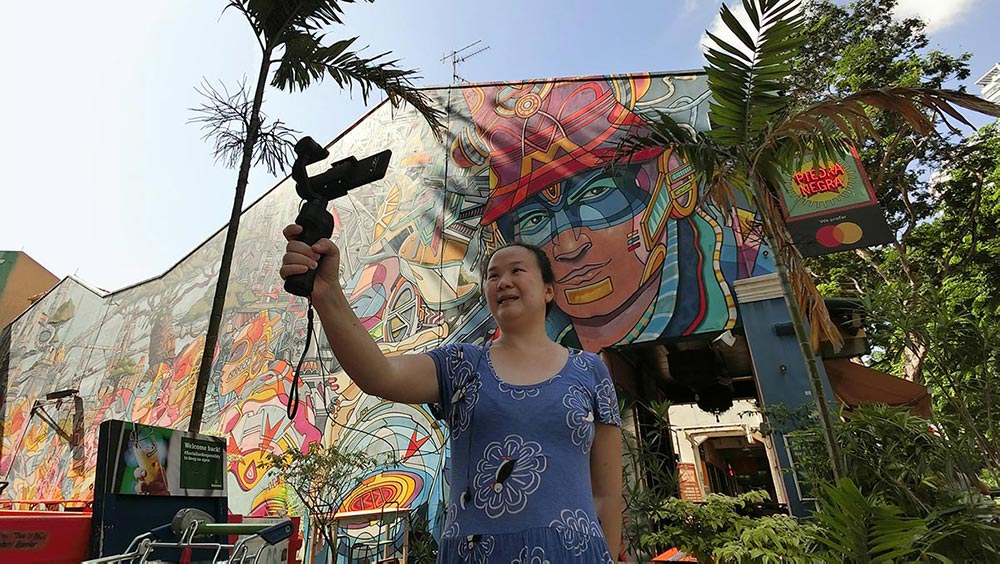
Guest Reviews
Amazon Explore reviews were archived before the platform was removed.
This was my second tour with Jaclynn and I really enjoyed it. She makes you feel as though you are right there and does a great job of weaving together history and fun facts, occasionally interjecting helpful maps or pictures to really hit home a point. […] Jaclynn will suffer through the incredible heat for you so you can enjoy Singapore without even breaking a sweat. I knew virtually nothing about Singapore before these tours but have learned alot and enjoyed these tours very much. Someday, I hope to see it in person, but this is definitely the next best thing.
M. D. Alexander
Sultans & Street Art in Kampong Gelam (Amazon Explore)
This was my first Amazon Explore tour. What’s the big deal, I thought. I can just see and learn stuff on the internet. However, I was very pleasantly surprised by the experience. Our tour guide, Jaclynn was fabulous. She invited us to ask questions, which we did. […] She molded the tour based on our questions and made the 1 hour tour a really good experience. I had my computer video output connected to our big screen TV. There were 4 family members in the room, all sitting on our comfortable couch and experiencing some of the sights and sounds of Singapore!
Abhay Mehta
Shrines & Shophouses of Telok Ayer (Amazon Explore)
This is the 2nd tour we’ve done with Jaclynn, and it was awesome again! She really feels like a friend who’s showing you around, and does well with engagement. This was a great look at Little India, and there’s plenty of street art and brightly colored buildings to keep you interested. She does a good job of pointing out interesting oddities that give a better look into what life is like there, which makes it feel different from other tours. You get a bigger picture of the area, which gives a deeper appreciation. And it’s just cool to wander around (ok she knows where she’s going) and take in the sights while getting tidbits of culture and history. Overall, really awesome tour, will book another!
Murals & History in Little India (Amazon Explore)
Singapore – Where Passion is Made Possible
- Singapore Dollar
You need an account to use this site

- Guides Recommend
- Tourist Guides
Your Journey Begin Here!
We have a strong pool of experienced tourist guides providing various tours across Singapore for schools, companies, new citizens and overseas visitors.

Booking tour
STGS Tours Pte Ltd is the wholly own Travel Agent of the Society of Tourist Guides (Singapore), incorporated on 4 Mar 2015 under Singapore Tourism Board Travel Agent Licence 02701 to develop and provide tours in Singapore.

Hire a Tourist guide
Hiring a Professional Tourist Guide in Singapore can never be easier because we have the largest pool of Professional Licensed Tour Guides to help you explore every possible and lesser known corners of Singapore that even a local may not know.

PDC for Tourist guide
Society of Tourist Guides (Singapore) conceptualized and conducted numerous Professional Development Courses (PDC) to help Licensed Singapore Tourist Guides to refresh and update their knowledge and skills as a Professional.
British Hainan
London is the capital city of England.
Visa Traveler
Exploring the world one country at a time
Singapore Tourist Visa (e-Visa): Requirements and Application Process
Updated: May 10, 2024
A Singapore tourist visa (e-Visa) is required for nationals of 35 countries traveling to Singapore as tourists.
Even though it’s an e-Visa, you cannot apply for it on your own. You need a Singapore local contact or an authorized visa agent to apply for the e-Visa on your behalf.
Quick summary:
- Who requires it: Nationals of 35 countries
- Validity: 30 days to 2 years, single or multiple-entry
- Allowed stay: 30 days
- Processing time: 3 working days
- Fee: 30 SGD
- Extensions: Once for 30 days
If you haven’t already, read the Singapore Visa Guide for information on various visa options for tourists, their eligibility and requirements.
Table of Contents
Understanding singapore tourist visa (e-visa).
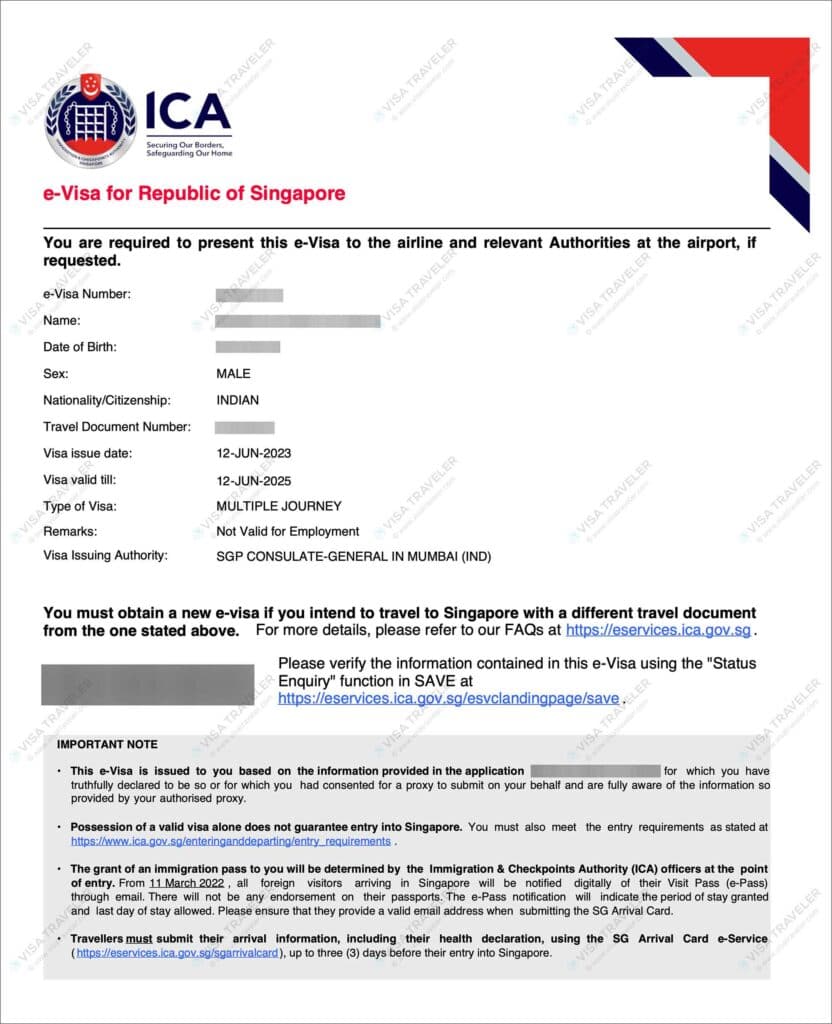
Tourist visa validity
Singapore tourist visa is valid from 30 days to 2 years. The validity of your tourist visa is decided on a case-by-case basis and nationality. The most common validity granted is 3 months. The exact validity will be written on the e-Visa after it’s issued.
Duration of stay
The allowed duration of stay in Singapore is 30 days. Your stay inside Singapore cannot exceed 30 days at a time.
If you need to stay longer and hold a multiple-entry visa, you can leave and reenter to receive an additional 30-day stay. You can also apply for a 30-day extension from within the country
Allowed number of entries
Singapore tourist visas are usually multiple-entry. But single-entry visas are also issued to certain nationalities such as Bangladesh.
Allowed ports of entry
You can enter Singapore from Changi international airport or any seaport or via land border crossing using the tourist visa. There are no restrictions on where you can enter from.
When to apply
You must apply for your tourist visa within 30 days before arrival in Singapore. The processing time is 3 business days. To summarize:
- Latest: 1 week before traveling
- Earliest: 30 days before traveling
Tourist visa extension
Tourist visa validity cannot be extended but you can extend your allowed stay for additional 30 days once.
You must apply online on the eServices portal no more than 14 days before the last day of your allowed duration of stay in Singapore.
You require a local sponsor to submit your extension application if you hold a passport from one of the Assessment Level II countries.
Visa extension fee is 30 SGD, are processed within 3 business days and are not guaranteed.
Singapore Tourist Visa (e-Visa) Requirements
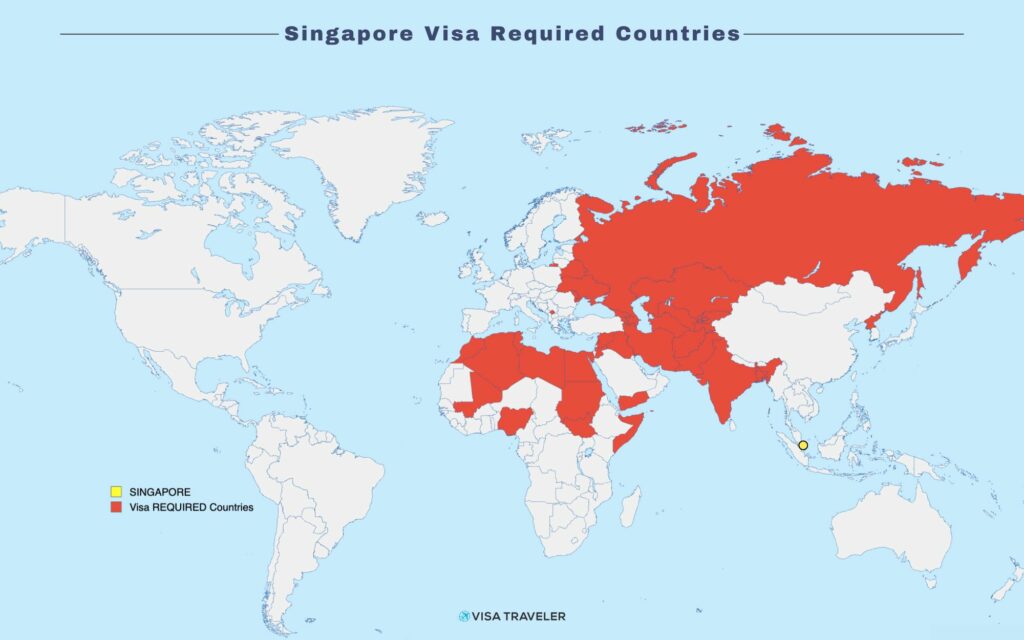
Tourist visa eligibility
The countries eligible for the tourist visa are divided into 2 tiers – Assessment Level I and Assessment Level II.
The difference is in the required documents. Chiefly, Level II countries must also submit a Letter of Introduction for Visa Application (LOI).
Assessment Level I Countries
- North Korea
- Turkmenistan
The above countries except North Korea are also eligible for Singapore VFTF if holding a visa from an eligible country.
Assessment Level II Countries
- Afghanistan
- South Sudan
Documents required
The following documents are required for the tourist visa.
- Passport valid for at least 6 months on the day of arrival in Singapore
- Photocopy of passport biodata page
- Completed and signed Form 14A
- One passport-size photo (digital photo if using a local contact to apply)
In addition, only Level II countries need to submit this:
- Completed Form V39A (also called a Letter of Introduction for Visa Application or LOI), issued by a local contact in Singapore.
The LOI must be issued by a local contact in Singapore. The local contact must meet the following requirements.
- Must be a Singapore citizen or a Singapore permanent resident
- Must be at least 21 years old
- Must have a Singpass account
If you don’t know anybody in Singapore who could help you with that, you can instead use an authorized visa agent to assist you with the Letter of Introduction.
Photo requirements
The photo must meet the following requirements.
- Must be taken within the last 3 months
- Must be in color against a plane white background
- Equal brightness, clear, sharp, and not pixelated
- Neutral facial expression with a closed mouth
- Fully visible shoulders and hair
- Any head covering must be dark in color against a white background
- Glasses are permitted as long as the lenses are untinted
- Fully visible eyes and no red eye
- No digital alterations
The digital photo file must meet the following requirements.
- Dimensions of the photo must be 400px x 514px
- Photo size must be of maximum 60KB
- Photo format must be JPG or JPEG
Tourist visa fee
The tourist visa fee is 30 SGD (~22 USD) and is payable online. If using an authorized agent to apply for your visa, you may have to pay the fee in cash in local currency.
Processing time
The standard processing time for the tourist visa is 3 business days excluding the day of submission.
Tourist Visa (e-Visa) Application Process
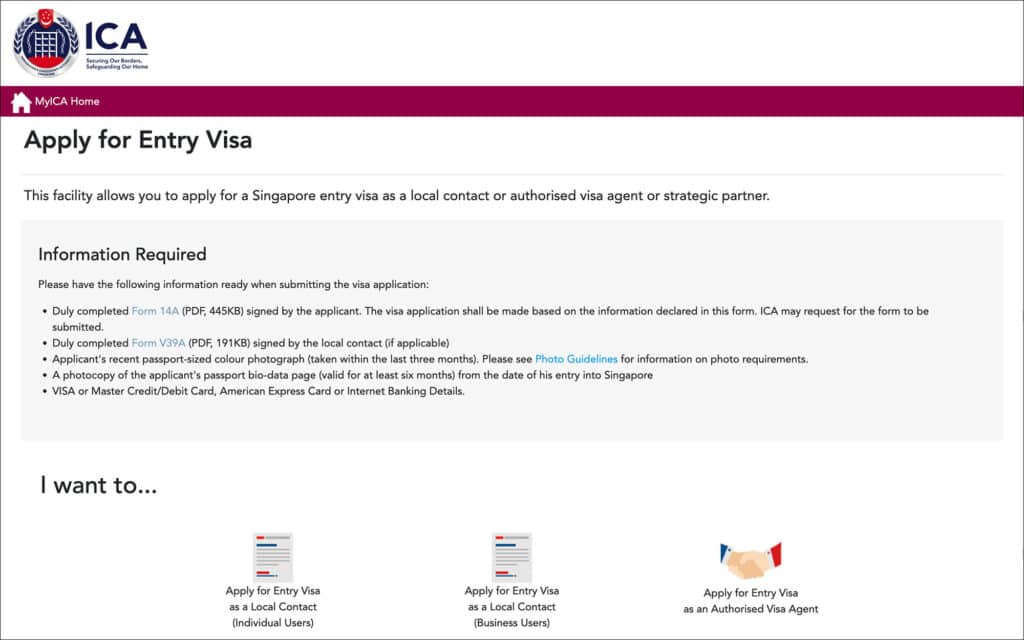
You cannot apply for the Singapore tourist visa (e-Visa) on your own. You must apply using a Singapore local contact or an authorized visa agent.
Most Singapore overseas missions do not accept tourist visa applications. They will ask you to use a local contact or an authorized agent.
But there are still a handful of Singapore embassies in the world that are still accepting tourist visa applications.
In summary, there are 3 ways to apply for Singapore tourist visa.
- Apply using a local contact
- Apply using an authorized visa agent
- Apply at a Singapore Overseas Mission
Let’s look at each of these options in detail.
1. Apply for tourist visa using a local contact
You must know someone in Singapore who can act as your local contact to apply for the tourist visa on your behalf.
This local contact in Singapore must have a “Singpass” account. Only Singapore citizens and Singapore Permanent Residents have Singpass accounts.
Send the following information and documents to your local contact.
- A copy of your passport ID page
- A digital passport-size photo
- Your email address, phone number
- Your current occupation, highest educational degree and annual income (in SGD)
- Your date of arrival, intended stay, and country of departure
Have your local contact follow the below steps to apply for your e-Visa.
Step 1 : Navigate to the Submission of Application for Visa Electronically (SAVE) portal.
Step 2 : Select “Apply for Entry Visa as a Local Contact (Individual Users)”. You will be redirected to the Singpass website to log in.
Step 3 : Click on “Create a New Application”.
Step 4 : Sequentially fill in the applicant’s details, travel information, and local contact details, upload a photo, and confirm.
Step 5 : Pay the visa fee of 30 SGD from the “MyCard Payment Summary” page. Download the invoice.
Step 6 : Print or screenshot the acknowledgment page and send it to the applicant. This acknowledgment page has the “Visa Application Reference Number” which is required to track or download the e-Visa.
If your email was used during the application process, you will also receive an acknowledgment email with the “Visa Application Reference Number”.
If your local contact used their email, they can forward the acknowledgment email to you so you can make a note of the “Visa Application Reference Number” and track the status of your e-Visa.
The processing of the e-Visa takes 3-5 working days. You can track the application status and download your approved e-Visa.
Instructions to track the status and download the approved e-Visa are in the sections below.
2. Apply for tourist visa using an authorized visa agent
The Singapore embassies that do not accept tourist visa applications usually post a list of authorized visa agents on their websites.
Find the nearest Singapore Overseas Mission in your country and check their website for the list of authorized visa agents.
Go to the authorized visa agent’s office and submit the following documents.
- Passport valid for at least 6 months from the date of your entry into Singapore
- Photocopy of your passport biodata page
- One passport-size photo affixed on the form
- Round-trip flight tickets
- Hotel bookings
- Completed Form V39A LOI (if applicable)
- Visa fee and service fee in local currency
Authorized agents do not keep your original passport with them. Presenting the original passport at the time of application submission is only for verification purposes.
Authorized agents have access to the SAVE portal and they will apply for your visa on your behalf. They will send you the “Visa Application Reference Number” to track and download your approved e-Visa.
Instructions to track the status and download the approved e-Visa are in the sections below.
3. Apply for tourist visa at Singapore overseas mission
Check with your nearest Singapore overseas mission if they accept tourist visa applications. If they do, find out whether you need an appointment or you can just walk in.
Submit the following documents to the Singapore embassy.
- Visa fee in local currency
The embassy will not keep your original passport. Presenting the original passport is only for verification purposes.
You will receive an email from the embassy with the “Visa Application Reference Number” to track and download your approved e-Visa.
How to track tourist visa (e-Visa) status
Even though you had to use a local contact or visa agent to apply, you can track status and download the e-Visa yourself. Follow the below steps to track your e-Visa status.
- Navigate to the Singapore SAVE portal
- Click on “Enquire Application Status”
- Enter your Visa Application Reference Number, and passport number and click on the “Next” button
- On the next page, you will see your current e-Visa status.
If your visa application is still in process, the status will be “Visa Application in Pending”. If approved, it will be “Your Application is Approved”.
How to download an approved tourist visa (e-Visa)
Follow the above steps to track your e-Visa status. If the visa has been successfully issued, you will see “Your Application is Approved” with your approved visa details.
Click the “Print e-Visa” button to download your e-Visa as a PDF file.
Print this e-Visa on an A4 or letter-size sheet and present it with your passport at immigration in Singapore.
How to contact tourist visa customer service
If you or your local contact have questions, use the following options to contact ICA customer service.
Webpage: Check the User Manual for questions on filling out the visa application Email: [email protected]
Entry Procedure at the Border
Make sure to print your e-Visa before your trip to Singapore. If you are eligible to use automated immigration lanes, you may not need a print. But the airline might want to see a print of your e-Visa.
Submit SG Arrival Card (SGAC)
You must submit your SG Arrival Card (SGAC) online within 3 days before arrival in Singapore. You can submit SGAC either online or using the MyICA Mobile App.
Use automated immigration lanes
Passport holders from 60 countries are eligible to use automated lanes at Changi airport and land borders. If you are not eligible to use automated lanes, you may pass through manned immigration desks.
You may be asked to present your e-Visa print. You may also be asked to produce proof of onward travel and proof of sufficient cash to ensure that you do not overstay your visa.
Receive Electronic Visit Pass (e-Pass)
Singapore does not stamp passports on entry or exit. After clearing the immigration, an Electronic Visit Pass (e-Pass) is issued and sent to your email which you have mentioned in your SG Arrival Card.
You can also retrieve your e-Pass on the ICA website using your Disembarkation/Embarkation number (DE No.) or passport information.
You can find your DE No. in your SG Arrival Card (SGAC) acknowledgment email, PDF or mobile app.
The e-Pass contains the following details:
- Disembarkation/Embarkation number (DE No.)
- Date and time of issuance of visit pass
- Number of days of stay granted
- Last day of stay allowed in Singapore
The e-Pass will also mention whether you are eligible to use the automated lanes for your departure and any subsequent trips to Singapore.
Frequently Asked Questions
Do i need to print the singapore e-visa.
Yes. You must print the Singapore e-Visa. Singaporean authorities may have the e-Visa on file already, but you are still asked to present if you’re not using the automated immigration lanes. Also, the airline staff might want to see the e-Visa print when checking in.
Why is there no visa stamp in my passport?
Singapore has phased out issuing physical stamps in passports. Instead, you will be issued an electronic visit pass (e-Pass) and sent to your email shortly after you enter Singapore.
WRITTEN BY THIRUMAL MOTATI

Thirumal Motati is an expert in tourist visa matters. He has been traveling the world on tourist visas for more than a decade. With his expertise, he has obtained several tourist visas, including the most strenuous ones such as the US, UK, Canada, and Schengen, some of which were granted multiple times. He has also set foot inside US consulates on numerous occasions. Mr. Motati has uncovered the secrets to successful visa applications. His guidance has enabled countless individuals to obtain their visas and fulfill their travel dreams. His statements have been mentioned in publications like Yahoo, BBC, The Hindu, and Travel Zoo.
PLAN YOUR TRAVEL WITH VISA TRAVELER
I highly recommend using these websites to plan your trip. I use these websites myself to apply for my visas, book my flights and hotels and purchase my travel insurance.
01. Apply for your visa
Get a verifiable flight itinerary for your visa application from DummyTicket247 . DummyTicket247 is a flight search engine to search and book flight itineraries for visas instantly. These flight itineraries are guaranteed to be valid for 2 weeks and work for all visa applications.
02. Book your fight
Find the cheapest flight tickets using Skyscanner . Skyscanner includes all budget airlines and you are guaranteed to find the cheapest flight to your destination.
03. Book your hotel
Book your hotel from Booking.com . Booking.com has pretty much every hotel, hostel and guesthouse from every destination.
04. Get your onward ticket
If traveling on a one-way ticket, use BestOnwardTicket to get proof of onward ticket for just $12, valid for 48 hours.
05. Purchase your insurance
Purchase travel medical insurance for your trip from SafetyWing . Insurance from SafetyWing covers COVID-19 and also comes with a visa letter which you can use for your visas.
Need more? Check out my travel resources page for the best websites to plan your trip.
LEGAL DISCLAIMER We are not affiliated with immigration, embassies or governments of any country. The content in this article is for educational and general informational purposes only, and shall not be understood or construed as, visa, immigration or legal advice. Your use of information provided in this article is solely at your own risk and you expressly agree not to rely upon any information contained in this article as a substitute for professional visa or immigration advice. Under no circumstance shall be held liable or responsible for any errors or omissions in this article or for any damage you may suffer in respect to any actions taken or not taken based on any or all of the information in this article. Please refer to our full disclaimer for further information.
AFFILIATE DISCLOSURE This post may contain affiliate links, which means we may receive a commission, at no extra cost to you, if you make a purchase through a link. Please refer to our full disclosure for further information.
MORE VISA GUIDES

UNITED KINGDOM

VIEW ALL VISA GUIDES
- Cookie Policy
- Copyright Notice
- Privacy Policy
- Terms of Use
- Flight Itinerary
- Hotel Reservation
- Travel Insurance
- Onward Ticket
- Testimonials
Search this site
8 of the best places to visit in Singapore

Apr 16, 2024 • 12 min read

From art to the astonishing architecture, here are the places that should be on every Singapore itinerary © Sean3810 / Getty Images
Singapore's allure goes beyond its iconic hotels, manicured gardens and world-class airport. A maturing local identity peeks through if you know where to look.
At first glance, the city isn't really known for range when it comes to travel, especially with its headliners clinching superlatives at every turn. Attractions like the Marina Bay Sands , Gardens by the Bay and Jewel Changi Airport suggest that the city-state has little beyond manmade sights to offer, but ask any local and they'll be happy to point out that there's life beyond Crazy Rich Asians.
To know Singapore more intimately, venture beyond its famous showcase to the various neighborhoods around the island. From a red light district that doubles as an excellent food hub, to a tranquil reservoir hiding the world's first nocturnal zoo, here are the best places to visit in Singapore to discover its alternative charms.

1. Pulau Ubin
A rural island holding fast to the 1960s
Off the eastern shores of Singapore is Pulau Ubin , a tiny island where many locals consider to be the last vestige of kampong (village) life. More than just a description of a gathering of makeshift houses made of zinc sheets and wood, the term represents a simpler time when the communal spirit was strong. Thus, it became a destination for Singaporeans to visit for some authentic nostalgia.
While small, the best way to explore the island is by bicycle – a fact evident by the many rental shops near the jetty entrance. If you have limited time, take the eastern trail as it leads to the island's most famous sight, Chek Jawa wetlands . Walk the extensive boardwalk to spot mudskippers and fiddler crabs, or come during low tide to see carpet anemones, ribbon seagrass and the occasional horseshoe crab. At the end of the walk, climb up Jejawi Tower for panoramic views of the area.
As one of the few sites for granite mining in the early days, the western trail features three water-filled quarries that look spectacular on a sunny day. Cycle first to Petai Quarry and pop by Butterfly Hill to see a small knoll decorated with plants that draw the fluttering creatures. Further along, you'll come by Puaka Hill. It's an easy 15-minute hike up to the highest viewpoint on the island, which offers stunning views of Ubin Quarry from the top. Consider dropping by Wei Tuo Fa Gong Temple nearby, a temple from the 1950s with colorful prayer flags over a pond.
Return to the main village and have a meal at one of the humble eateries there. Enjoy the rustic atmosphere as well as an impressive example of a wayang stage for traditional theatrical performances, now rarely seen on the main island.
Planning tip: Take a one-way ferry ride to the island from Changi Point Ferry Terminal for just $4 a person. The independent operators will wait to fill the boat of 12 before leaving, so waiting times may vary from a few minutes to 20 minutes. Insect repellant is heavily advised.
The red-light district that's also a popular supper spot
Since it's a place that's often seen as sanitized, the fact that there are legalized brothels in Singapore may be a surprise to some. Limited to the even-numbered lorongs (lanes) branching out from Geylang Road, one can identify them by their open gates and their red numbered signs or crimson hanging lanterns at the door. However, for many locals, the star attraction here is really the unpretentious food scene, especially after dark.
It's all a very logical evolution of course. Customers visited in the wee hours and neighboring businesses adjusted their hours for the clientele. As more night owls gravitated there for supper, Geylang became a 24/7 food haven. An early example is Yong He Eating House , a Taiwanese joint most famous for their fried fritters and smooth beancurd. It's also one of the few places you can try a salty variety of the latter, made savory with minced meat, preserved vegetables, spring onions and dried shrimp. Further down the road, Eminent Frog Porridge has earned itself a mention in the Michelin Bib Gourmand guide with their claypot delicacy, but there are other stir-fry dishes for those not into the creatures. Charcoal-cooked dishes are popular too, with stunning examples of seafood noodles fried in a wok at Swee Guan Hokkien Mee and the oven-roasted char siew pork slivers in Koung’s Wanton Mee . For a sharing platter, Mongkok Dim Sum serves up all sorts of steaming treats in small baskets throughout the day. There's even a string of vendors selling that most polarizing of fruits, the durian.
Local tip: Safety is not an issue despite the repute, and the brothel operators mainly keep to themselves. If you do venture into their lanes, do not gawk and refrain from taking pictures and videos. Instead, if you wish to better learn about the history of the area, the independent Geylang Adventures will assure one of a vivid and respectful trail.

A photogenic Peranakan enclave with tasty adventures
An ethnic group that emerged from early Chinese settlers marrying with Malay and Indonesian communities in Southeast Asia, the Peranakans bear out this fused heritage in an attractive and vibrant way. Other than visiting the museum at Armenian Street , one can visit Katong to experience their architecture and food.
The most photogenic stretch can be found at Koon Send Road, where a line of multi-colored pastel terrace houses are a perfect backdrop. As you make your way down Joo Chiat Road towards East Coast Road, you'll notice numerous food options, ranging from local Bak Kut Teh (pork rib soup) to trendy cafes. You'll also come by Old Bibik's Peranakan Kitchen , a great option for some authentic cuisine. As you move towards East Coast Road, try to spot one of the many eye-catching murals tucked in the alleys.
The main stretch holds more food offerings, but visit Peranakan Inn & Lounge for homey classics like Ayam (chicken) with Buah Keluak – a savory and painstaking dish made special by the earthy nuts. Baba Chews is a more commercial counterpart located below Hotel Indigo. Across the road, the glutinous rice dumplings at Kim Choo Kueh Chang are hot commodities, especially during the Mid-Autumn Festival. While you're there, popular food choices include Katong Laksa – which serves a creamy curry noodle dish – and Birds of Paradise , a local gelato maker known for their botanical flavors.
As the area is not as accessible via the local subway system, make the most of your outing with a visit to the nearby East Coast Park, Singapore's largest example of the coastal ecosystem. Then visit East Coast Lagoon Food Village to sample the tasty hawker fare.
4. Tanjong Pagar
A different creature by day and night
With its proximity to the Central Business District (CBD), Tanjong Pagar is a hotbed of suits seeking out hawker nosh at Amoy and Maxwell Food Centers, or their afternoon cuppa at chic cafes. This juxtaposition between modern and traditional can also be seen in its architecture, especially in Chinatown and along Amoy Street and Telok Ayer Street, where heritage shophouses sit next to towering blocks. Interestingly, this is also where one can find Singapore's multi-religious society represented along one road. Make your way to the South Bridge Road end of Pagoda Street and you'll find yourself between two 19th century places of worship, Masjid Jamae and Sri Mariamman Temple. Move further south of the main road and you'll come by the impressive Buddha Tooth Relic Temple , with Fairfield Methodist Church just across the junction.
When the sun sets, the area goes from bustling to bar-centric, and here you'll find some of the world's best watering holes. In fact, two of the three Singaporean bars that have made it to the World's 50 Best list call this area home. Jigger & Pony is a more polished affair residing in Amara Hotel – an excellent place for an espresso martini. Sago House has a more convivial atmosphere in a compact space, along with a smaller menu that rotates regularly. For other tipple explorations, try Live Twice and Oriental Elixir .
Tanjong Pagar also hosts the island's only LGBTQ+ nightlife businesses. While not legally recognized, the community enjoys relative freedom at these establishments. Taboo and Tantric Bar are local institutions, while newer joints prefer more provocative names such as Sausage Market and Neil's Conversion Clinic .
A natural sanctuary with world-class facilities
The Singapore Zoo consistently places itself as one of the world's best animal parks and a must visit when visiting the country, thanks to its naturalistic habitats that cater to the wildlife. Always innovating, the teams behind the zoo created Night Safari Park in 1994, the world's first nocturnal zoo exhibit, and later on in 2014, River Wonders – the first and only river-themed version in Asia. This was most recently joined by Bird Paradise in 2023, showcasing an astonishing variety of birds such as hornbills, flamingos and even penguins, set against various Asian backdrops like rice terraces and bamboo groves.
Less talked about is the nearby Upper Seletar Reservoir. Situated in the Central Catchment Reserve, it is a peaceful escape from the urban areas and also a great spot to catch a tree lined sunset. With such a scenic potential, the area is also slated for a new attraction in 2024, Rainforest Park ; highlights will include a 250m suspension bridge and a canopy walk 11m above the ground.
Planning tip: Private hire is the most convenient transport option, and the journey will take about 30 minutes from the city. For public transport, take the MRT subway to Ang Mo Kio Station and transfer to bus 138. You can also drop off midway to visit the reservoir. Or, head further north to Khatib MRT and opt for the $2 park shuttle ride. Because Bird Paradise is slightly apart from the other zoo parks, it is best to visit it first and take the free shuttle to the other segments and finish with Night Safari Park.

6. Tiong Bahru
A residential relic which experienced a renaissance
Singapore's public housing scheme first took root in Tiong Bahru in the 1930s, which is why the designs here differ so greatly from today's soaring blocks. Rather than focusing on living density, the four-story buildings are comfortably spaced apart, making it an easy stroll for visitors. The architecture is a highlight here: quiet art deco with soft curves infused with Straits elements, like corridors reminiscent of five-foot ways, spiral staircases and light wells. Spot the green tinted glass used to shield residents from the harshest sun in certain areas.
For the most representative take, make your way to block 55 at the junction of Tiong Bahru Road and Tiong Poh Road to admire the architectural highlights of these rare pre-war buildings. When the area was slated for conservation, this drew the attention of the local creative community, and many have quietly made their homes or businesses here. You'll see this new millennial revival as you expand your walk, spotting intermittent options for quaint cafes, crafty retail stores and delicious hawker fare. Tiong Bahru Bakery , opened by Frenchman Gontran Cherrier, has become a stalwart fix for croissants, while Micro Bread & Co and Flock Cafe are great local alternatives for baked goods. Cat Socrates has delightful stationary and souvenirs to take home, and Nana & Bird is a well-established spot for chic women's clothing.
Don't forget to visit Tiong Bahru Market for a true local experience. The first level houses daily sundry, fresh flowers and other necessities, while the second story is a well-regarded hawker center. Take your pick from piping hot umami prawn noodles, freshly-steamed buns and even a Michelin Bib Gourmand chicken rice stall. Finish off your exploration at Nimble/Knead and have your weary body spiffed up at this unique spa housed in shipping containers.
7. Bugis and Kampong Glam
A thriving shopping area with Malay cultural attractions
Kampong Glam has emerged as one of the best places to visit in Singapore, largely thanks to its star attraction, Haji Lane. The bohemian street is as unbridled as it gets on the island, with energetic murals crawling up shophouses selling everything from clothing to trinkets. Make your way to the end at Beach Road (where the coastline used to be before reclamation happened) to experience a Mexican meal underneath a massive Aztec art piece at Piedra Niegra , or join the locals having some soupy prawn noodles at Blanco Court or Hainanese pork chop at Prince Coffee House.
There's plenty to see past the revelry at the lane. As you make your way towards Sultan Mosque , you'll notice Arab Street specializes in classic Middle-Eastern trade items like fabrics and rugs – much like in Singapore's early years. As you reach Bussorah Street, admire the golden domes of the mosque down a line of shophouses before popping by Jamal Kazura Aromatics for some heady traditional perfumes. Neighboring hole-in-the-wall Bhai Sarbat continues to pour out some of the best teh tarik (frothy milk tea) anywhere on the island. The nearby Malay Heritage Centre is undergoing some renovations, but the grounds are pretty to walk through given its original use as a former Istana (palace). Other worthy mentions include the dramatic Vintage Cameras Museum shaped like an actual Rollei, and Golden Landmark Shopping Center with its humble shops and startlingly beautiful glass elevators.
The larger neighborhood of Bugis is also an enjoyable slice of Singapore, boasting a more street market-style approach. Walk up to Albert Street and you'll be sandwiched between Albert Center with tons of hawker options and Fu Lu Shou Complex, which offers affordable massages. To the west stand two favored religious venues: Kwan Im Thong Hood Cho Temple , one of the busiest Chinese temple in Singapore, and beautifully decorated Sri Krishnan Temple.
Local tip: Bugis is also one of the best places to stay when visiting Singapore. Not only is it well-connected with four out of the six MRT subway lines within easy walking distance, but it contains surprisingly affordable accommodation options for such a central location, including independent operators and global brands like ibis and Mercure hotels.
This article was first published Oct 13, 2021 and updated Apr 16, 2024.
Explore related stories

Tips & Advice
Jun 21, 2024 • 9 min read
August is prime time for an escape. Find out the best places to travel for adventure, relaxation, wildlife and culture.

Jun 15, 2024 • 17 min read

Jun 11, 2024 • 5 min read

Apr 29, 2024 • 6 min read

Apr 18, 2024 • 5 min read

Apr 6, 2024 • 6 min read
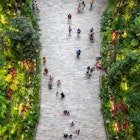
Mar 9, 2024 • 6 min read

Mar 8, 2024 • 5 min read

Mar 8, 2024 • 6 min read

Feb 9, 2024 • 12 min read
Michelin Bib Gourmand 2024 list: 81 eateries in Singapore make the cut
Advertisement.
This year, 11 establishments have newly joined the list including a casual Italian restaurant and a prawn noodles stall that has been operating for over 70 years.
Jalan Sultan Prawn Mee (left) and MP Thai (Vision Exchange) (right) are two of the entrants in the 2024 edition of Michelin Bib Gourmand. (Photos: Brand Cellar)
This audio is generated by an AI tool.

Hazeeq Sukri
Planning to eat out soon? Perhaps you and your dining companions can visit one of the 81 eateries that were recently recognised with a Michelin Bib Gourmand. There were 79 eateries on the list in 2023.
On Tuesday (Jun 18), Michelin Guide announced its 2024 Bib Gourmand Selection for Singapore which includes several iconic hawker stalls and up-and-coming restaurants.
Created in 1997, the Bib Gourmand list recognises eateries that offer exceptional value-for-money gourmet experiences. Eateries are nominated by anonymous Michelin Guide inspectors.
The 81 eateries that have been recognised this year include 11 new entrants. They are:
- Jalan Sultan Prawn Mee
- Ru Ji Kitchen
- Chef Kang’s Noodle House
- Delhi Lahori
- Jason Penang Cuisine
- Margaret Drive Sin Kee Chicken Rice
- MP Thai (Vision Exchange)
- Song Fish Soup
Out of the 11, Jalan Sultan Prawn Mee and Ru Ji Kitchen were moved from Michelin Selected – a category for eateries that met the criteria set by Michelin inspectors but did not qualify for a Bib Gourmand or Michelin Star.

Long-time foodies will be familiar with Jalan Sultan Prawn Mee – the legendary stall near Kallang MRT station that's famous for their aromatic pork rib prawn noodles. The stall has been operating for over 70 years and still boasts a steady stream of loyal customers.
View this post on Instagram A post shared by Fico (@ficomasseria)
Cafe hoppers can make a pit stop at Fico – an aesthetically-pleasing restaurant at East Coast Park. The casual Italian restaurant by chef Mirko Febbrile has an ever-changing menu. Some of their more famous items include handmade pasta and focaccina – an appetiser-sized portion of regular focaccia bread.
In a press statement, Gwendal Poullennec, the International Director of the Michelin Guide said: “When discussing Singapore's cuisine, one cannot overlook the integral role of hawker centres. These are not only a part of everyday life for the common people, but also a microcosm of the multi-ethnic society.
"The eighth edition of Singapore’s Bib Gourmand selection reflects the dynamic and diverse smorgasbord of eateries in the casual and hawker category, and our inspectors have discovered rich cultural traditions that include Thai, Italian, Indian and Penang cuisines, in addition to the long-serving heritage hawkers that continue to serve up their much-loved recipes, all at incredible value.
"Encouragingly, we are seeing more young people joining the food and beverage industry, with even formally trained chefs willing to join the ranks of hawkers. We are hopeful that Singaporeans are embracing their traditional food culture with an open mindset, allowing it to flourish more in the future."
MICHELIN'S BIB GOURMAND 2024 FULL LIST
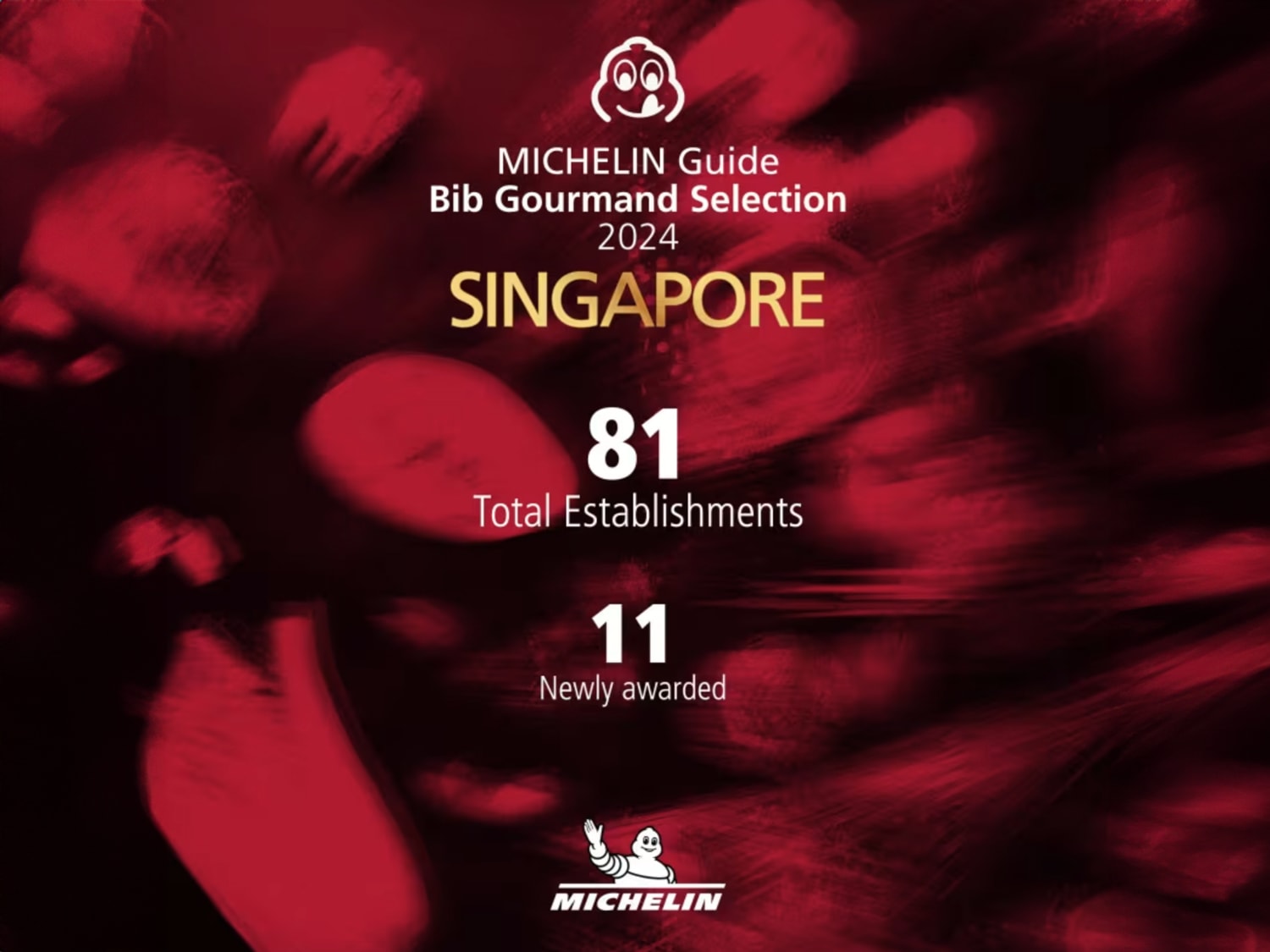
Related Topics
Recommended, recent searches, trending topics, this browser is no longer supported.
We know it's a hassle to switch browsers but we want your experience with CNA to be fast, secure and the best it can possibly be.
To continue, upgrade to a supported browser or, for the finest experience, download the mobile app.
Upgraded but still having issues? Contact us
Tatler Asia
Sign up for Tatler Dining
By signing up, you agree to our Terms and Privacy
Michelin Bib Gourmand 2024 winners in Singapore
By Dudi Aureus
Jun 19, 2024

Making the Cut
Singapore might seem like an expensive country for dining out, but if you look a little closer, you’ll discover many options offering delicious dishes at wallet-friendly prices. This brings us to Michelin Guide Singapore’s Bib Gourmand list, which celebrates exceptional gourmet experiences at moderate prices.
The 2024 list was revealed yesterday, with a total of 81 establishments, up from last year’s total selection of 79. Nine of these are brand new entries, while the other two have been bumped up from the Michelin Selected category.
It’s not difficult to compile a list of dining options in Singapore, thanks to its vibrant hawker culture and accessible prices—something Gwendal Poullennec, the international director of the Michelin Guide, greatly appreciates. He highlights the “integral” role of hawker centers in our “everyday life” as a “microcosm of [Singapore’s] multi-ethnic society.” Poullennec notes that this year's list, which features rich cultural traditions in both new establishments and long-serving heritage hawkers, reflects the dynamic and diverse smorgasbord of eateries in the casual and hawker category.
Dudi Aureus Senior Dining Editor, Singapore
Editor’s Picks
14 izakayas to visit for the best Japanese comfort food

Sushi rolls at Catfish Izakaya (Photo: Catfish Izakaya)
Unwind at these Japanese izakayas for sake, bar bites, and more
MORE DINING STORIES

Araya’s new Costa menu is a celebration of Chilean flavours and ingredients

Maison Hennessy launches the Hennessy VSOP Night Blaze in Singapore

Sustainable dishes and tipples were served at the Tatler Homes Design Awards 2024

Tatler and Diageo host a Talisker appreciation night at COMO Metropolitan Singapore
Tatler Tidbit
Singapore’s hottest new restaurant is nowhere near the city centre—it’s all the way in Jurong. Na Oh, located at the Hyundai Motor Group Innovation Centre Singapore, is a collaboration between Hyundai Motor Group and chef Corey Lee, who is behind three-Michelin-starred Benu in San Francisco. Here, you can enjoy elegant yet approachable Korean delicacies in a four-course prix-fixe menu, including favourites such as samgyetang, naengmyun and mulhwe, made from produce harvested from the centre’s own vertical farm.

Around Asia
PHILIPPINES | Where to order ceviche around the Philippines

MALAYSIA | Shaken, not stirred: A guide to martinis in the Klang Valley

HONG KONG | The best sushi omakase restaurants in Hong Kong

YOUR OPINION MATTERS
Share Your Feedback in Our Survey!

Take our quick 2-minute survey and let us know what you think. Your feedback about our newsletters helps us craft your personalised Tatler experience!
Share your feedback

- Board Of Directors
- Organisation Chart
- Achieving Quality Tourism
- Legislation
- Corporate Governance
- Invest in Tourism
- ASEAN Economic Community
- Media Releases
- Corporate Publications
- Newsletters
- Statistics & Market Insights Overview
- Tourism Statistics
- Industries Overview
- Arts & Entertainment
- Attractions
- Dining & Retail
- Integrated Resorts
- Meetings, Incentives, Conventions & Exhibitions
Tourist Guides
- Travel Agents
- Assistance and Licensing Overview
- Tourism Sustainability Programme (TSP)
- Singapore Visitor Centre (SVC) Network Partnership
- Grants Overview
- Licensing Overview
- Tax Incentives Overview
- Other Assistance & Resources Overview
- SG Stories Content Fund Season 2
- Marketing Partnership Programme
- SingapoReimagine Marketing Programme
- Singapore On-screen Fund
- Hotel Licensing Regulations
- Data College
- Trade Events and Activities
- Trade Events Overview
- SingapoReimagine Global Conversations
- SingapoRediscovers Vouchers
- Made With Passion
- Joint Promotion Opportunities
- Procurement Opportunities for STB's Overseas Regional Offices
- Product And Industry Updates
- Rental of F1 Pit Building
- Singapore Tourism Accelerator
- Sponsorship Opportunities
- STB Marketing College
- Tourism Innovation Challenge
- Harnessing Technology to Emerge Stronger Post COVID-19
- Tourism Transformation Index (TXI)
- New Tourism Development in Jurong Lake District
- International Trade Events
- Singapore Familiarization Trips
- EVA-Ready Programme
- Tourism Industry Conference
- Expo 2025 Sponsorship and Partnership Opportunities
- Virtual Influencer Open Call for Collaboration
- Students & Fresh Graduates
- Professionals
- Attractions Operator
- Business/Leisure Event Organiser
- Media Professional
- Tourist Guide
- Travel Agent
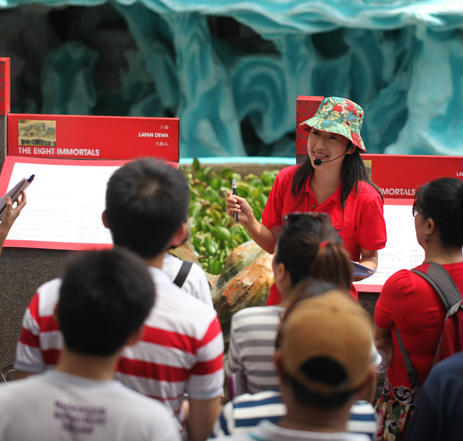
- Tourist Guides Directory
Persons interested in providing guiding services for remuneration in Singapore must possess a General Tourist Guide licence.
On 13 October 2023, Singapore Tourism Board called a Request-For-Proposal (RFP) on GeBIZ via the RFI module for the appointment of training organisations for the Tourist Guide course. The RFP was closed on 6 November 2023, with the details below:
Reference no: STB/TG/23-24/RFI-2
Description: REQUEST FOR PROPOSAL FOR APPOINTMENT OF TRAINING ORGANISATIONS FOR TOURIST GUIDE COURSE
Published Date: 13 October 2023
Closing Date: 6 November 2023, 4PM
Appointed Date: 8 December 2023
Appointed Training Organisations:
1. Singapore Chinese Chamber Institute of Business (SCCIOB)]
2. Tourism Management Institute of Singapore (TMIS)
3. William Angliss Institute Pte Ltd (WAI)
1. Singapore Chinese Chamber Institute of Business (SCCIOB)
4. Society of Tourist Guides (Singapore) (STGS)
5. Alice Cheong Swee Chin on behalf of Health Supreme Group (HSG)
- Apply for Licence
Guidelines for Platform Operators on Requirement for Travel Agent and Tourist Guide Licences
Platform operators who intend to list services relating to tours, travel or guiding services should first conduct due diligence checks to ensure that the necessary Travel Agent and Tourist Guide licence requirements are met before deciding to publish the listing.
For more information on how to do so, please refer to STB's Guidelines for Platform Operators .
- How to become a General Tourist Guide
Contact Information
For more information, please contact the Tourist Guides team at [email protected] or visit the Travel Agents and Tourist Guides Licensing System (TRUST) website .
About the Organisation
What industry does your organization fall within, what best describes the key intent of the project that your organisation is seeking funding for, is your organisation a singapore-registered legal entity, is your organisation an association, is the project able to achieve one or more of the following outcome.
- Increase no. of sailings to/from Singapore
- Increase no. of foreign cruise passengers to Singapore through sailings to/from Singapore
- Increase no. of pre/post nights for cruise passengers sailing to/from Singapore
- Increase capability of industry players via cruise-specific industry training programmes
- Strengthen the potential/ attractiveness of cruising in Singapore and/or Southeast Asia
Is the project able to achieve one or more of the following?
- Improve visitor satisfaction (especially foreign visitors)
- Increase footfall
- Increase revenue
- Significant branding and PR value
Is the project able to attract foreign visitors and contribute to foreign visitors' spend?
Who will be the main target audience of your project, is your project innovative and/or a new event in singapore with tourism potential, what best describes your project, does the event have proven track records in singapore or overseas, and/or growth in tourism value such as growing foreign visitorship, and/or enhancement of precinct vibrancy etc, does the project have a clear tourism focus (e.g. tourism-related trainings, tourism companies taking on capability development initiatives or technology companies creating technology products and services for the tourism businesses), what best describes your market feasibility study project.
Based on your selection, the following STB grant/s may be applicable for your project:
Please note that projects that have commenced prior to Singapore Tourism Board's offer may not be eligible for grant support. Examples where projects are deemed as having commenced include:
- Applicant has started work on the project e.g. tender has been called.
- Applicant has made payment(s) to any supplier, vendor or third party.
- Applicant has signed a contractual agreement with any supplier, vendor or third party.

IMAGES
VIDEO
COMMENTS
13 February 2023. General Advisory for Travellers. 1. Singapore is open to all travellers without quarantine. This includes non-fully vaccinated travellers. Covid-19 pre-departure tests are not required. More details are available here. 2. Depending on the destination you are travelling from, mask-wearing aboard flights and ferries to Singapore ...
Valid visa (if required); Proof of vaccination Submitted SG Arrival Card. For more information on travel requirements, visit Singapore's SafeTravel Website. Non-fully vaccinated short-term visitors above the age of 13 will require valid entry approval to enter Singapore with 7-day Stay-Home-Notice.
6. Singapore is a safe and stable place to visit. Singapore is also well-known for its generally stable political and business climate, often ranked as one of the least corrupt countries in the world. Strikes that can disrupt travel plans are practically nonexistent here.
Visit Singapore Official Site - Discover Singapore's Best Attractions. VIEW ALL. Uncover the beauty of a city in nature from must-visit places and attractions to off-the-beaten spots, neighbourhoods, and festive events. Visit Singapore now!
Ensure a smooth sailing travel experience in Singapore with our essential travel guide tips! From transportation, weather, and internet hacks, we got you covered! ... and internet hacks, we got you covered! Essential Information. Prepare for an unforgettable journey to Singapore - get important information, tips and advice to maximize your ...
Travellers who are unwell or tested positive for COVID-19 should receive medical advice if they fulfil any of the following criteria. Aged 60 and older. Have Acute Respiratory Infection (ARI) symptoms. Immunocompromised or have concurrent medical conditions such as obesity (e.g., adults with a BMI ≥30), hypertension, diabetes, chronic heart ...
Find out whether you need a visa to visit Singapore, what types of visas are available the visa rules for trouble-free travel. Read article. Money and Costs. While prices in Singapore are akin to most other major international cities, there are plenty of ways to explore Singapore without breaking the bank.
Singapore Travel Costs. Accommodation - Accommodation in Singapore isn't cheap and most dorm rooms are on the larger side, with 12-18 beds. A bed in a large dorm costs around 25-48 SGD per night, while a private room costs 60-100 SGD. Most hostels include free Wi-Fi and free breakfast.
Singapore Travel Guide 2024. Singapore has been in the top ten list of the most visited cities in the world for years. Our small yet beautiful island deserves it as the city has everything to satisfy any need of visitors: a green and safe environment, cultural diversity, delicious food, world-class shopping malls, the latest fashion and ...
From the vibrant city of Kuala Lumpur to the cool retreat of Cameron Highlands. Immerse yourself in lush tea plantations before heading to Borneo for thrilling orangutan encounters and unforgettable river safaris. Brunei and Singapore conclude the trip. view trip ⤍. 7 days / from1750 USD.
Singapore is hot and humid year-round so there isn't a perfect time to visit weather-wise. The average temperature is 26-27°C and the humidity is always above 80% no matter what time of year. The only thing you probably need to know regarding Singapore's weather is that the wettest months are from November to January.
Singapore guide with all the information you'll need when visiting the Asian Tiger. Discover the island, the city and the country. ... Discover why tourism to Singapore grows year on year. Book Your Hotel Stay With a Discount. Hotels and accommodation in general are quite expensive for what you would expect in a Southeast Asian city.
The airport is also home to Singapore Airlines, the flag carrier of Singapore. Together with Scoot, both airlines fly to more than 135 destinations globally. The award-winning airport itself is jam-packed with activities and amenities, making it a world-class attraction in its own right. Singapore Changi Airport Site Singapore Airlines Site
Climate: Temperatures in Singapore are consistent all year. Typically, on any given day, you will see temperatures between 75-89 degrees Fahrenheit (24-32 degrees Celsius). The humidity level is high; the country sees an average of 167 days of rain per year, so bring that umbrella! Steph + Kaitlin Lez See the World.
Amazon Explore (closed) As a guide with Fourwinds, I created and hosted various hour-long virtual tours around Singapore during the pandemic from 2021-2022 when travel opportunities were limited, introducing an international audience to Singaporean tourist attractions like Chinatown, Little India and the Singapore River, with a focus on street art. ...
Booking tour. STGS Tours Pte Ltd is the wholly own Travel Agent of the Society of Tourist Guides (Singapore), incorporated on 4 Mar 2015 under Singapore Tourism Board Travel Agent Licence 02701 to develop and provide tours in Singapore. See more.
1. These Regulations may be cited as the Singapore Tourism (Tourist Guides) Regulations 2014 and shall come into operation on 7 October 2014. Register of guides at places or points of interest. 2. For the purposes of identifying the persons described in section 19B (2) of the Act, the owner or operator of a place or point of interest must —. ( a)
Tourism Information & Services Hub (TIH) Visit TIH to access a rich resource of Singapore's tourism product offerings and travel software services, offered by STB and industry. Sign up here to receive our newsletters and alerts on latest tourism news and trade events.
Send the following information and documents to your local contact. Have your local contact follow the below steps to apply for your e-Visa. Step 1: Navigate to the Submission of Application for Visa Electronically (SAVE) portal. Step 2: Select "Apply for Entry Visa as a Local Contact (Individual Users)".
Visit Singapore
5. Mandai. A natural sanctuary with world-class facilities. The Singapore Zoo consistently places itself as one of the world's best animal parks and a must visit when visiting the country, thanks to its naturalistic habitats that cater to the wildlife.
Perhaps you and your dining companions can visit one of the 81 eateries that were recently recognised with a Michelin Bib Gourmand. There were 79 eateries on the list in 2023. On Tuesday (Jun 18), Michelin Guide announced its 2024 Bib Gourmand Selection for Singapore which includes several iconic hawker stalls and up-and-coming restaurants.
2 Your Quarterly Guide For general enquiries, contact the Singapore TouriSm Board Tourism Court, 1 Orchard Spring Lane Singapore 247729 Tel: (65) 6736-6622 Fax: (65) 6736-9423 Touristline: 1800-736-2000 (toll-free in Singapore) or (65) 6736-2000 (outside Singapore) www.yoursingapore.com asia city Media group general Manager ric Stockfis
This brings us to Michelin Guide Singapore's Bib Gourmand list, which celebrates exceptional gourmet experiences at moderate prices. The 2024 list was revealed yesterday, with a total of 81 establishments, up from last year's total selection of 79. Nine of these are brand new entries, while the other two have been bumped up from the ...
Tourist Guide. To find out more about the Tourist Guide profession and the role of the Singapore Tourism Board in supporting the development of the profession, please click here. Below is a directory of Tourist Guide-related information and services that can be found on the websites of STB, and other relevant government agencies.
Useful Information. Explore Mandai Wildlife Reserve, home to Bird Paradise, Singapore Zoo, Night Safari, River Wonders, and much more. Your thrilling adventure awaits!
On 13 October 2023, Singapore Tourism Board called a Request-For-Proposal (RFP) on GeBIZ via the RFI module for the appointment of training organisations for the Tourist Guide course. The RFP was closed on 6 November 2023, with the details below: Reference no: STB/TG/23-24/RFI-2. Description: REQUEST FOR PROPOSAL FOR APPOINTMENT OF TRAINING ...